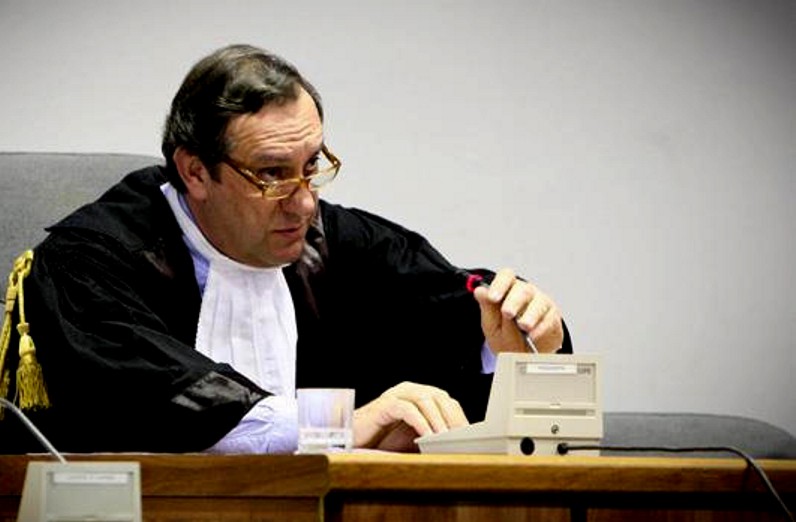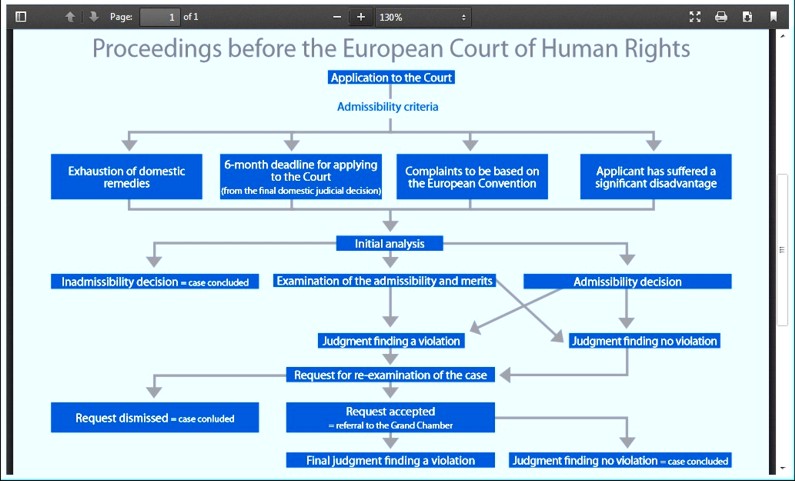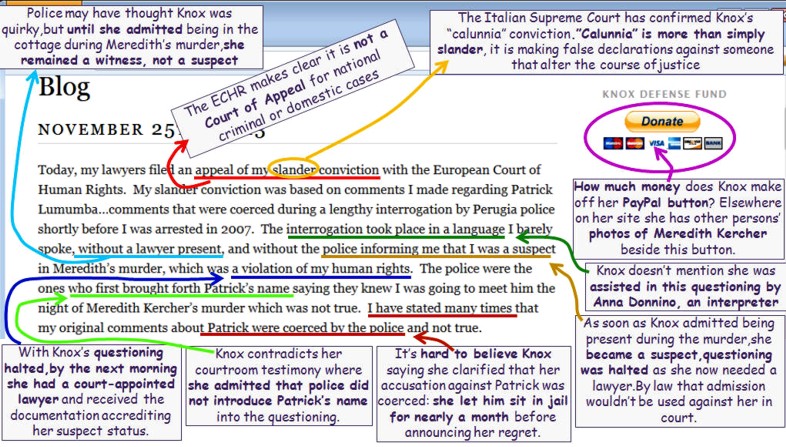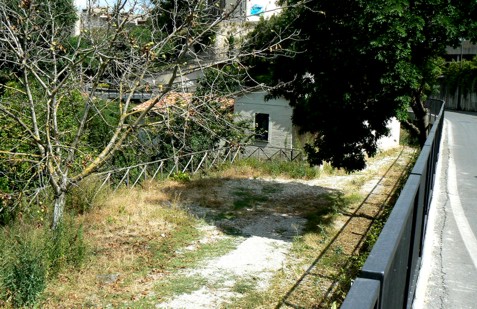
Category: Amanda Knox #1
Thursday, May 22, 2014
The Cuomo Interview: Why This May Be The Last Time Knox Tries To Argue Innocence On TV
Posted by Vivianna
Concepts of innocence
I want to make the distinction here, as in some of my previous posts, between factual and legal innocence to show how on factual evidence Knox is giving up.
- Factual innocence is what we may consider “true” innocence, i.e. the complete lack of involvement in a crime.
- Legal innocence, on the other hand, is innocence established in a court of law on the basis of a reconstruction of events.
Ideally, the two coincide. But there are certainly cases in which someone who is factually guilty of a crime may be found innocent in a legal sense due to a lack of evidence.
This distinction is important here since the type of innocence Knox appears to want to establish throughout her most recent interview is, surprisingly, legal innocence ““ not factual innocence.
There are signs that Knox knows she’s failed to sell factual innocence, and is losing traction with all crime professionals everywhere - the psychologists are already long gone.
And signs that American big-media fascination has run its course. A few days after the release of the Nencini motivation report, Knox was interviewed by Chris Cuomo on CNN. This was the one big Knox-camp response to the report - and the main airing of the interview was just after 6:00 am. A video of some highlights can be viewed on the CNN website after the brief ad.
I would like to refer you at the start to this excellent post by Eyes for Lies, who has been praised on TJMK before. The transcribed quotes below are taken from the Eyes for Lies blog and they are accurate; their accuracy can be confirmed by listening to the interview linked above.
“This judge’s motivations…”
The first thing you may notice when you watch the interview is Knox’s difficulty to form articulate sentences. This is not a comment on her intelligence or her ability to speak in public, but it appears odd considering her coaching and the number of interviews she has given before.
She pauses often and constantly reforms her sentences, perhaps realizing that what she wants to say may not play out in her favor. As a result, she uses vague and sometimes unusual language, and her sentence fragments reveal aspects which she is otherwise attempting to conceal.
This inability to effortlessly stick to her script in a somewhat tense scenario betrays the fact that there is a discrepancy between her beliefs and her public statements. It also begs the question of why someone who is supposedly telling the truth needs to construct her answers so carefully if she has nothing to hide.
Cuomo begins the interview by asking Knox why she thought that this judge [Nencini] went further than any other. Here is Knox’ answer, preceded by a rather odd smile:
I”¦believe”¦I mean, I can’t speculate what this judge’s motivations”¦personal motivations or otherwise”¦What I can say is that”¦as”¦this”¦case”¦has progressed”¦”¦.the evidence”¦that the prosecution has claimed exist against me”¦.has been”¦has been proven less and less and less.
The quote of Knox above is a good example from the legal v factual innocence point of view. First, let’s look at the opening few words.
She begins by saying “I believe”¦” and then stops. Evidently, only Knox knows what exactly she intended to say, but it’s rather obvious from her next sentence that what she wanted to say about the judge was not particularly flattering or diplomatic. Given her current situation and the pending defamation suits, she probably thought it was not a good idea to be direct.
Hence, she rephrases on the fly and goes on say that she couldn’t comment on his motivations, while doing this nevertheless towards the end of her sentence. This is known as “paralipsis” which is stating something (which sometimes may be considered an ad hominen) while pretending not to do so.
The fact that she mentions Judge Nencini’s “personal motivations or otherwise” implies that his decision may have not been objective, but based on a personal bias against the defendants (an idea that Ms. Bongiorno has been unsuccessfully trying to flog after the verdict).
“Diminishing evidence…”
Moving on, she makes the first appeal to the legal innocence I mentioned above. Instead of clearly stating that she was innocent or that she did not kill Meredith, Knox prefers to focus on the fact that the evidence against her has been allegedly diminishing.
For one, this is false, as no piece of evidence at all has been dismissed; on the contrary, the new DNA test results from the Carabinieri lab could be considered as additional evidence. So Knox is blatantly lying about something which can be factually disproved, which immediately raises the question of what else she could be lying about.
Secondly, what makes this statement odd is the fact that she does not assert her factual innocence. As someone who was supposedly wrongly accused and against whom there is evidence, whether or not she chooses to acknowledge it, the one thing she has control over is the inner knowledge of her own factual innocence.
That kind of knowledge, in someone who was not subjected to torture or brainwashing, should be untouchable ““ absolute. No matter what anyone said she did, if she knew for a fact that she hadn’t done it, she would be stating it at every opportunity.
The fact that she chooses not to do this indicates that Knox herself may have trouble keeping up this pretense of innocence, especially if she is privately plagued by fear and perhaps guilt or remorse (although she hasn’t shown any signs of the latter). It has been suggested that she may be at a point where she has convinced herself of an alternate truth, but based on what she says, I am uncertain that she genuinely believes what she says.
“I did not kill…”
Only in her next sentence does she finally offer a denial ““ unfortunately couched in vague language which undermines her point.
I did not kill my friend. I did not wield a knife. I had no reason to.
Simple, straight sentences like these are the kind we would expect from an innocent person. The problem lies in the fact that, throughout this interview, Knox never clearly states, “I did not kill Meredith.” I don’t think Knox is lying when she says “I did not kill my friend,” since, strictly speaking, she did not kill any of her friends.
The problem is that Meredith was not her friend, even if both she and Meredith may have acted friendly towards each other at the beginning. Based on statements given by Meredith’s English friends and by her family, Meredith was irritated by Amanda’s behavior and frequently complained about the latter’s habits (untidiness, dirtiness, attention-seeking, bringing strange men to the apartment, etc).
Meredith probably maintained a civil front in order to avoid tension, but she had already started to distance herself. The fact that she did not return Amanda’s texts on Halloween demonstrates that she wanted to spend time with her actual friends, rather than have to deal with Knox’ histrionic episodes. Given the social nature of Halloween in a college town, this situation would not have occurred if the two had really been close prior to the murder.
“I did not wield a knife” is a blatant lie, since Knox’ DNA was found on both the handle and blade of the kitchen knife. Eyes for Lies found it strange that Knox even mentioned the knife in light of her innocence claim, but I think it makes sense because the knife figured prominently in the appeal proceedings.
Or rather, it makes sense for someone who is focused on the legal innocence aspect mentioned above. Knox equates being found innocent with being innocent, as we’ll see below, so it’s important for her to address the evidence (without realizing that, by doing so, she is acting in ways which are not consistent with factual innocence).
“My friend…”
Returning to “my friend,” we see the beginning of a trend which continues throughout the interview. Knox has a tendency to refer to Meredith obliquely ““ rarely by name.
This manifests itself in several ways: by exerting ownership (“MY friend”) or by referring to her as an inanimate object (which we’ll see happening in the following paragraphs). Considering that murder is a total, irreversible way of taking away someone’s personhood, this constant appropriation and objectification are disturbing and belie Knox’s supposed fondness for Meredith.
Next, Knox says, “I”¦.I was”¦in the month we were living together, we were becoming friends.”
Here I agree with Eyes for Lies’ argument that perhaps what Knox started saying was “I was trying to be friends with her.” Note that she says “we were becoming friends,” not “we were friends.” This calls into question her truthfulness when she calls Meredith “my friend.”
By Knox’ own admission, they were not quite friends yet at that point - or rather, not anymore, since the disagreements had already started; once again, Knox distorts the truth by making it seem that they were getting closer rather than as in reality growing apart.
A week before the murder occurred, we went out to a classical music concert together. Like”¦we had never fought. There is no trace of us.
The part about the concert is true (this is where Knox met Sollecito). We don’t know why Meredith left before the concert ended: perhaps she was tired, she had to study, or didn’t particularly enjoy the music; it’s also possible that she may have felt irritated with whatever Knox was doing to attract Sollecito’s attention.
Given his inexperience and lack of confidence at the time, Sollecito would have most likely not approached Knox without an invitation, but that’s a matter for another post.
“Like “¦ we had never fought” can be interpreted in two ways. One: we can read it as “we went out [”¦] together like we had never fought”; this implies that they did fight, which would be true, but that they were working on settling their differences. Two: “like” could be a simple filler word, and we should read it as “we had never fought,” which would be false. I’m not sure which way she meant it, so I’ll leave it at that.
“There is no trace…”
It seems like Knox jumps to saying “there is no trace of us,” but the video posted online was edited, and not very smoothly. You can see the transition, so she must have said this after additional remarks or in response to a different question. Hence, the fact that it seems random isn’t probably her fault.
It’s interesting in itself though because it’s another instance of her lying about verifiable facts (see judges’ reports and the numerous posts regarding forensic evidence). Also, it’s an important statement in conjunction with the infamous quote about Meredith’s “broken body” because it once again equates lack of evidence with innocence, rather than directly stating innocence.
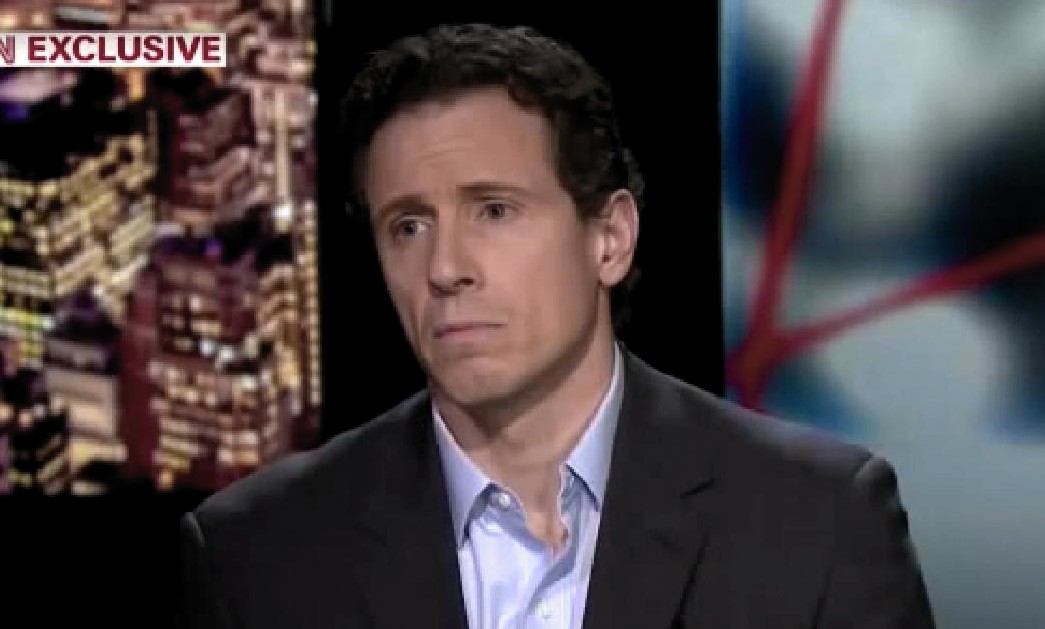
“If Guede committed…”
This is perhaps the most controversial part of the interview and also the part which ties things together (the idea of legal innocence and the objectification of Meredith).
If Rudy Guede”¦committed this crime”¦which he did”¦we know that because his DNA is there”¦on the”¦on Meredith’s body, around Meredith’s body. His hand prints and foot prints in her blood. None of that exists for me and if I were there, I would have had traces of”¦Meredith’s broken body on me”¦and I would have left traces of myself”¦.around”¦around Meredith’s corpse”¦.and I”¦I am not there”¦and that proves my innocence.
She starts her response with something which is both incredibly revealing and absolutely shocking for someone who claims innocence - “If Rudy Guede committed this crime.”
I don’t think anyone has questioned Guede’s involvement in this murder, even if the precise extent of it remains unclear, and the two have partially built their defense around the lone wolf scenario. Also, since Guede’s verdict was issued and confirmed years ago, Knox does not need to pussyfoot around his status for fear of slander charges.
Knox is not talking about Guede’s involvement in general terms, however. She’s explicitly referring to him actually committing the crime (i.e. inflicting the lethal wounds). Her hesitation betrays the fact that she doesn’t believe he did.
Of course, she catches herself: “which he did “¦ we know that because his DNA is there.” It’s interesting she has to point out how she knows this ““ from reading the evidence, certainly, not from being there and therefore knowing for a fact that he participated in the assault, but not in the actual murder.
“On the… Meredith’s body”
Next, we have another instance of objectification: “”¦on the”¦on Meredith’s body, around Meredith’s body.” Perhaps she wanted to say “on the corpse” and thought it might be a bit inconsiderate, so she switches to the more neutral “body,” only to use the implied word a few sentences later. However, what’s striking about it is that she thinks of Meredith as a body, not as a person.
I want you to think about the time you lost a friend or a family member, regardless of circumstances. Did you ever think of them as a body, or did you continue to think of them as they were in life, even if you had to identify them or take care of funeral arrangements? I’m not asking this rhetorically, by the way.
When my father died (rather suddenly, but due to illness), it never ever crossed my mind to think of him as a body, but perhaps circumstances alter perceptions. I’ve also read numerous things written by Meredith’s friends and family, and they always refer to her as “Meredith” or “Mez.” To them, she never stopped being a person because they loved her, and diminishing her would have been inconceivable.
I think it’s far more likely that the word “body” will appear in a military, medical, or anthropological context, in which there is no personal connection between the observer and the dead. We may use this word ourselves when talking about the crime scene, but it’s rather telling that we use her name far more often than someone who actually knew her in life.
I can’t know what Knox felt about Meredith, but there is no indication it was positive. The clinical and graphic manner in which she refers to “Meredith’s body,” “broken body,” and “corpse” betrays an obstinate refusal to acknowledge her as a person. Why, if Meredith was indeed her friend as she insists?
For one, it suggests that Knox actually saw Meredith being transformed into a “body” and that this image stuck with her. Let’s not forget that Knox never saw Meredith after the latter was discovered; based on the statements of the other people present in the cottage, she was not near the door when it was broken open, and she was also not asked to identify Meredith.
The only way an innocent Knox could have seen Meredith after her death would have been in photographs presented in court. There is no doubt that such photographs can be disturbing and upsetting, but I don’t think they can supplant memories of actual experiences.
Secondly, it’s a form of denying someone’s personhood and of expressing power and domination. A murderer can literally deprive someone of personhood ““ an act which they may feel triumphant about, especially if the person was a source of distress in life. I can’t help feeling that Knox is gloating when she mentions Meredith’s body.
Thirdly, refusing to name the victim and to refer to her as a person is a way of preventing her from taking center stage. While Knox has repeatedly complained about the media attention she has received, both she and her campaign have fought really hard to marginalize and displace Meredith in an attempt to replace the tragedy of the latter’s death with the supposed tragedy of Knox’ unwarranted imprisonment.
It must be disappointing when someone you’ve risked everything to eliminate continues stealing your thunder, so Knox isn’t letting us forget the actual state of things: she is there, in a TV studio, enjoying the luxury of being an “I,” while Meredith has been reduced to an “it” ““ a broken body.
The words she uses to refer to Meredith, whether graphic or macabre, suggest disgust with the physicality of death. Perhaps Knox just wanted Meredith to go away forever and found it difficult to deal with the aftermath of a violent murder.
“None of that exists…”
Returning to the issue of legal innocence, Knox claims that Guede’s hand and foot prints were identified, while “none of that exists for me”; also, “I would have left traces of myself”¦.around”¦around Meredith’s corpse.”
These are further lies, since a size 36-38 foot print was identified, and Knox was the only one it could have belonged to. There were also five mixed DNA spots (comingled blood from both women), which, just because they were not right next to Meredith’s body, cannot be dismissed.
The crime scene covers the entire house as far as the police and the court are concerned. How anyone else defines the crime scene is of no consequence at all.
“[”¦] if I were there, I would have had traces of”¦Meredith’s broken body on me,” she says next. This is, of course, an impossible scenario since Meredith was discovered long hours after her death and it was days before police looked at her.
In the meantime, a clean up had unquestionably taken place, and Knox herself admits to having showered (perhaps not in the morning as she wrote in her email, but earlier that night). Also, Knox was initially considered a witness, not a suspect, and her person and clothes were not immediately swabbed by the scientific police.
She’s trying to make it sound like no traces were discovered on her, but in fact no one tested for this and no one can prove it either way.
“I am not there…”
She continues: “I”¦I am not there”¦and that proves my innocence.” By “I am not there,” she means that incriminating traces were not found at the scene, not that she wasn’t there on that night. Note the difference between “I am innocent,” which she does not say, and “[the lack of evidence] proves my innocence.”
In other words, she’s insisting on legal innocence, but doesn’t actually confirm her factual innocence. The problem with that is since she’s lying about the factual evidence, it’s difficult to take her legal innocence claim seriously.
“Possible to win…”
At the end of the interview, she says, “I truly believe it is possible to win this and to bring”¦to bring an end to all of the speculation and the nonsensical theories and really bring peace to everyone who has suffered from this experience.”
The use of the word “win” here is peculiar, to say the least. It’s consistent with her competitive attitude towards Meredith, for one ““ killing her and getting away with it, regardless of the sacrifices made on the way, would constitute a sort of victory, I suppose.
It also has the implication of “winning the case,” which we may expect from a lawyer or someone for whom this is a professional, rather than personal undertaking. A wrongfully accused and imprisoned person has nothing to win in the end, considering the traumas they suffered; the most they can hope for is recognition and vindication.
She is correct, however, that it’s possible to end the speculation and theories. However, that would require her, Sollecito, or Guede to tell the truth about what happened on that night. In this, she has full agency ““ this is not something that can be done for her, but something which she needs to do herself.
Other than that, the “speculation and nonsensical theories” refers to the judges’ reports, in addition to lay commentary; her problem is that saying something is “nonsensical” doesn’t automatically render it so in the absence of arguments and proof (none of which she or her defense have been able to provide).
“Peace to everyone…”
“[”¦] really bring peace to everyone who has suffered from this experience” ““ this has to be one of the blindest and most self-centered things Knox has ever said about the case.
For one, it’s doubtful that a favorable verdict would even bring peace to her and Sollecito, since they will always know what they’ve done, even if they don’t have to fear imprisonment anymore. It might or might not bring peace to their families, who have already spent a fortune on their defense and whose trust has probably been shattered forever.
However, to imply that it would bring peace to Meredith’s family and friends is both presumptuous and contemptible.
Knox and her arrogant followers have, on numerous occasions, taken it upon themselves to speak for the Kerchers ““ how they should feel, what they should accept, etc. First pioneered by the contemptible Candace Dempsey, it is incredibly disrespectful to people who have suffered a great, irreplaceable, undeserved loss and who have done nothing wrong by pursuing justice for their loved one.
The fact that Knox and Sollecito have refused to confess for the past seven years has done nothing but prolong the suffering of Meredith’s family by denying them closure and the necessary space to mourn and heal.
Conclusions
what we have here is a number of outright lies, some distortions, and some false starts which help pinpoint what Knox believes, rather than what she says. What we don’t have is a plea for factual innocence, but an attempt to prove legal innocence by glossing over the evidence or dismissing it altogether, and by calling into question the judges’ professionalism. We also see no evidence of respect or compassion for Meredith, but rather an attempt to objectify and incorporate her in Knox’ own story.
My impression is that Knox does not believe the things she says herself and is struggling to maintain a front; that despite her coaching and experience with interviews, she is getting ahead of herself instead of simply reciting her lines, which denotes anxiety and conflict. I don’t believe she’s at peace with the murder at least, which hopefully means that at some point she might be inclined to confess.
Friday, May 09, 2014
Amanda Knox’s Awkward, Robotic TV Appearances: New Science Could Blow Away Such Fraud
Posted by Peter Quennell
In Italy the zillion or so Italians that Amanda Knox has framed are starting to push back on steroids in the Italian media and courts.
More on that coming up. Meanwhile Americans have been a tad less nimble to realize that they’ve swallowed a gigantic hoax.
Unsurprising, perhaps, given years of uniquely one-sided TV coverage of the case. But thanks to the good English-language reporters in Italy who have persevered. And thanks to CNN’s Nancy Grace for her biting segment this week, making it quite obvious where she stands on guilt.
Knox’s TV appearances and written statements are ringing more and more hollow as they lose all touch with reality. See our post immediately below. Such a brazen mangling of hard facts is absolutely absurd.
The professionals Vivianna and Friendofstfrank, main posters here, each have posts in the works for us on what they have been reading from Knox’s persona on the TV screen.
In the meantime, please check out these videos on the new science. Each is an hour long. They show just how hard it could get for any future Knoxes and Sollecitos to sustain a similar hoax in future.
Here’s an overview of the videos from the New York Times.
The program looks at how developments in neuroscience are affecting court cases and might do so even more radically in the future. It sets up a fictional trial involving a shooting during a convenience store robbery, cutting between courtroom scenes and visits with researchers and legal scholars who are working on the front edge of this world.
By mapping brain activity, scientists know quite a bit about which regions are involved with processes like facial recognition, as well as the differences between mature adult brains and the brains of young people. (The fictional shooting suspect is 18.) The program has segments on how this research might be applied to issues like determining whether a witness is correctly identifying someone, whether a defendant is lying about not having been at a particular location, even whether potential jurors have racial biases.
Researchers, able to see the implications of their work, are also already studying whether knowledgeable test subjects can subvert the technology, rigging test results by how they think or where they focus their eyes.
Tuesday, May 06, 2014
Judge Nencini Issues Harsh Warning To Tell The Truth - So Amanda Knox Does The Precise Opposite
Posted by Our Main Posters
1. Substance Of The Nencini Explanatory Report
The Florence Court of Appeals released the Nencini Motivations Report in Florence one week ago today.
This report explains the rejection of Knox’s and Sollecito’s own first appeal against the Massei trial outcome of 2009. Four years were lost because the Hellmann court, which heard the first iteration of that appeal was bent as Cassation, the competent judge displaced, and now Judge Nencini have all concluded.
The Hellmann outcome of 2011 was mostly annulled, as in “ceased to exist”. The main findings and verdict have zero legal standing, and zero relevance to today’s process though (see below) Knox and Sollecito repeatedly try to ride that dead horse again.
Cassation confirmed Knox’s three-year prison sentence for framing Patrick (for which she has served the time). And Cassation referred the methods and recommendations of the Conti & Vecchiotti consultancy, which Cassation had hammered on legal grounds, to the Florence appeal court for the substance to be reviewed.
Our evidence and law experts here and in Italy have been looking at Judge Nencini’s 347 page report and find it hard-hitting and unequivocally blunt.
It will be extremely hard to appeal against within the very narrow limits Cassation allows. It removes all of Judge Massei’s ambiguities about motives, it reaffirms the witness statements of Curatolo and Quintavalle, and it judicially affirms the validity of the DNA and other forensic evidence against Knox and Sollecito.
There is overwhelming proof of the presence of all three perps, Knox, Sollecito and Guede, in the cottage that night. Guede is considered to have been brought inside by Knox, who had the only key, and he could not possibly have broken in through Filomena Romanelli’s window in the manner asserted by their defense.
Especially troubling for the defense, the report hints at an illegal suborning of the independent forensic experts appointed by the Hellmann court, and it also hints that the two “supergrass” witnesses, the prisoners Aviello and Alessi, may have been illegally tampered with by Sollecito’s lawyer Giulia Bongiorno, as first claimed 30 months ago.
The report warns that criminal slander of justice officials and other contempts of court will be heavily leaned on.
So the report demolishes the last remnants of Judge Claudio Hellmann’s now annulled acquittal, and substitutes for its fatally flawed reasoning a tightly crafted report that confirms the convictions of Knox and Sollecito.
It confirms that they acted in concert with Guede as Cassation itself long ago concluded had to be the case, and it appears to close any possible argument against the verdict that will carry weight at the Supreme Court.
2. Amanda Knox’s Press-Release Statement In Response
Knox issued a seven paragraph statement later the same day. Maybe not the smartest bit of work.
It is riddled with factual inaccuracies and innuendo, is typically arrogant and condescending in tone, includes the trademark racial innuendos about Italians and the black guy in the case, and shows no signs in its compiling of competent legal help.
Here below we show the various ways in which Knox flouts Judge Nencini’s warning and attempts to mislead. None of what Knox stated was the truth.
Claim: The Hellmann Court Found Knox “Innocent”
I have stated from the beginning of this long ordeal that I am innocent of the accusations against me. I was found innocent by the only court in Italy that retained independent forensic experts to review my case. I want to state again today what I have said throughout this process: I am innocent of the accusation against me, and the recent motivation document does not ““ and cannot ““ change the fact of my innocence.
First even if she was provisionally released following the now-annulled appeal, Amanda Knox was never, repeat never, found innocent. Only Cassation can make that final ruling, and they strongly found against the lower court that had jumped the tracks midway-through.
Even Judge Hellman himself said after his verdict that ‘the truth might be otherwise’ and suggested any reasonable doubt as to guilt has not been categorically and legally dismissed. He seemed to divine that he had failed in his task of bending the outcome in a way that would stay bent.
Second the court that Knox thinks found her innocent no longer exists as a legal fact. It seems to endemically escape Knox that the Hellmann outcome was annulled. Annulled. As in: wiped off the books. It is surprising that even Curt Knox and Ted Simon and David Marriott, while admittedly themselves no masters of Italian law, cannot help Knox to grasp that simple fact. It weakens her to keep clinging to a myth.
One reason it was annulled (and the reasons were overwhelming, one of Italy’s most decisive annullments ever) was that both Cassation and Dr Nencini had good reason to suspect the Hellmann court had been corrupted and had deliberately departed from the evidence and the law. Knox needs to ask herself why the highly qualified Judge Chiari was pushed aside (and immediately resigned in anger) in favor of a wrongly-qualified business judge (who is now ignominiously retired).
Third, it needs to be grasped by Knox that the Conti/Vecchiotti consultancy, far from being legally right and acting independently (and scientifically), was suggested as illegal by Perugia’s chief prosecutor Dr Galati, as appeal judges are forbidden from appointing consultants at that stage. While Cassation passed in ruling on that one, the consultancy outcome was criticised as illogical and legally unsound by both Cassation and Judge Nencini, as biased, full of baseless innuendo about contamination, and possibly tampered with by an American academic hired by the defense.
Conclusion: none of what Knox stated was the truth.
Claim: Only Rudy Guede’s DNA Was Found
The recent motivation document does not ““ and cannot ““ change the forensic evidence: experts agreed that my DNA was not found anywhere in Meredith’s room, while the DNA of the actual murderer, Rudy Guede, was found throughout that room and on Meredith’s body. This forensic evidence directly refutes the multiple-assailant theory found in the new motivation document. This theory is not supported by any reliable forensic evidence.
The forensic evidence is not just the DNA on the knife or in the room. It also includes the extensive traces deposited by Knox in the rest of the crime scene (bathroom, corridor and Filomena’s bedroom), and it also includes all of the autopsy.
Meredith’s room itself was not comprehensively tested for DNA. The room was dusted only for fingerprints, as the investigators had to make a call on prints or DNA.
Guede’s DNA was not found “throughout that room” or all over Meredith’s body. Guede’s DNA was found only in one instance on Meredith’s body, on a part of Meredith’s bra, mixed with Meredith’s blood on a sweatshirt cuff and the purse, and on toilet paper in a bathroom.
Knox’s DNA was found mixed with the blood of Meredith in multiple places, the only known source for which was the pool of blood in Meredith’s bedroom: multiple prints of Knox’s bare right foot in the hallway and in Knox’ bedroom, and at least five instances of mixed samples containing the DNA of both Meredith and Knox, including in the north bathroom and Filomena’s room, places where Guede did not go.
The court ruled that the blood and mixed DNA evidence found throughout the crime scene places her and Sollecito there at the time of the murder at the same time as Rudy Guede.
Though not DNA, there was one bloody shoe print in Meredith’s bedroom estimated to be Euro size 36-38, compatible with Knox size 37 and with no one else known of who could have left it there.
No fingerprints of anyone were found in the room, just a palmprint of Rudy Guede. Fingerprints were not found even on Knox’s own lamp, which she only confirmed grudgingly at trial was her own, and not found even in Knox’s own bedroom. Overwhelming sign of a cleanup? The courts all believed so.
Conclusion: none of what Knox stated was the truth.
Claim: The Knife As Murder Weapon Was Disproved
The forensic evidence also directly refutes the theory that the kitchen knife was the murder weapon: the court-appointed independent experts confirmed that neither Meredith’s blood nor her DNA was on the alleged murder weapon, which experts also agreed did not match the stab wounds or the bloody imprint of a knife on her pillow.
Judge Nencini’s finding is that two knives HAD to have been involved from both side of Meredith’s throat and the final blow was by a large knife the same size as the one in evidence.
Regarding the large knife, Knox rehashes the same arguments her defense made to no avail before the original trial court that found her guilty. We posted explaining the solid proof here and here.
The only DNA tests that matter with regard to the big knife are (1) the sound finding by Dr Stefanoni that Meredith’s DNA was on the blade - Knox is wrong, the independent experts did not refute that; (2) the sound findings by Dr Stefanoni and the Carabinieri lab that Knox’s DNA was on both the blade and the handle of the knife. None were overturned; contamination was ruled out; and the defense was left without a shot.
The Hellmann-appointed experts confirmed that the genetic profile found on the knife blade was the genetic profile of Meredith Kercher. The TMB test did not confirm if it was blood, but defense experts were forced to concede that TMB erroneously fails to confirm that blood is present about half the times in assessing minute quantities.
The Hellmann-appointed experts tried to explain away the genetic profile as being the result of contamination, but were never able to identify any scenario by which a knife that had supposedly never left Sollecto’s kitchen contained biological material yielding a clear genetic profile of Meredith Kercher.
Accordingly the Appeals court has ruled the kitchen knife is in fact the one that was wielded by her to strike a final blow, and at the same time there was a second knife in the room used by Sollecito to torture Meredith.
London DNA expert Dr David Balding certified Raf’s DNA as being on the bra clasp. This proves by itself that Sollecito was there. Knox belatedly claimed she stayed at the Via Garibaldi apartment with Sollecito all evening and now and then Sollecito belatedly backs her up. But how could that be if the court has positives of his footprint on the bathroom rug and on the bra, showing he was over at Meredith’s cottage that night? Proof of him present equals proof of her.
The Hellmann-appointed experts were not charged with analyzing the stab wounds, or whether the imprint on a sheet was of a knife or of something else and the result of the fabric being folded - nor was this within their field of expertise. Defense experts testifying on these issues were in conflict.
Conclusion: none of what Knox stated was the truth.
Claim: The Circumstantial Evidence Is “Unreliable”
In fact, in the prior proceeding in which I was found innocent, the court specifically concluded that the forensic evidence did not support my alleged participation in the crime and further found that the circumstantial evidence was both unreliable and contrary to a conclusion of guilt.
The recent motivation document does not ““ and cannot ““ change the fact that the forensic evidence still does not support my participation and the circumstantial evidence still remains unreliable and contrary to the conclusion of guilt.
Knox appeals to Hellmann’s ruling on the circumstantial evidence being unsound. But the Supreme Court, in annulling Hellmann, explained why it found his arguments illogical, and reminded the court of the standards by which circumstantial evidence must form a coherent whole. Judge Nencini in our opinion amply meets those standards in an elegantly argued report which will be hard to defeat at Rome’s Supreme Court.
Knox herself has proved the “unreliable” one, proven over and over again to be a liar who attests to her own bad memory in written statements, who talks of “dreams her mind made up”, who repeatedly goes vague.
We cannot rely on Knox’s recall of phoning mom, the timing of which moves and sometimes disappears. Knox claims she can’t remember where she was that night, she told a whopper of a lie on her boss, she can’t remember if the door to Filomena’s room was open or closed, she can’t remember her own lamp, she claims she rarely looks at a clock. On and on.
The strongest example of circumstantial evidence Knox can’t shake is the five spots of her DNA mixed with Meredith’s blood. Maybe 2 or 3 spots could be put down to unlucky chance, but five really removes reasonable doubt.
Conclusion: none of what Knox stated was the truth.
Claim: No “Legitimate” Motive Is Identified
And the recent motivation document does not ““ and cannot ““ identify any legitimate motive for my alleged involvement in this terrible crime. No fewer than three motives have been previously advanced by the prosecution and by the courts. Each of these theories was as unsupported as the purported motive found in the new motivation document, and each of these alleged motives was subsequently abandoned by the prosecution or the courts. Like the prior “motives”, the latest “motive” in the new motivation document is not supported by any credible evidence or logic. There is simply no basis in the record or otherwise for this latest theory.
“Proof” of motive is not required in any legal system in the world. The serial misleader Ted Simon should at least admit to that. The motives advanced were not withdrawn or abandoned by successive judges; they were fine-tuned chronologically only within very narrow limits. The sex hazing that went too far was weighted downward and pushed back, and a battle over theft of money was weighted upward and pushed forward.
The court found very compelling evidence that Knox committed the murder and led the pack. It postulates that Meredith and Amanda were incompatible with each other, and that Knox, Sollecito and Guede, high on drugs, first assaulted Meredith, restrained and abused her, and then murdered her with two knives.
Knox was known to be in serious rejection by those she encountered in Perugia for her sharp-elbowed brashness - growing rejection by her flatmates, her employer and the bar customers, and just about everyone she encountered except initially for Sollecito. But soon even he was being given a hard time and has semi-rejected Knox in return ever since. The first words of his 8 November 2007 statement to Judge Matteini were “I wish to not see Amanda ever again.”
And money was a huge looming problem which could have had her back in Seattle in weeks. Knox was known to want to head for China, and was known locally to have an expensive drug habit which had cut her savings in half. She really needed to hang on to that job at Patrick’s bar, especially as she had no work permit.
Sollecito’s bank balance was minimally topped up by his father each month. Francesco seemed to realise cocaine is an expensive habit and didnt want to see his son off down that slippery slope. So with Knox’s own habit, her remaining savings would have run out in weeks. How then to explain to Curt Knox that she really needed a whole lot more? He would have given her a very hard time before any more money flowed.
Conclusion: none of what Knox stated was the truth.
Claim: The Supreme Court Will Allow Another Full Appeal
I will now focus on pursuing an appeal before the Italian supreme court. I remain hopeful that the Italian courts will once again recognise my innocence. I want to thank once again, from the bottom of my heart, all of those””family, friends, and strangers””who have supported me and believe in my innocence.
Cassation wont “once again” recognise innocence. Knox should be encouraged to get real. So should her dummy followers - all her immediate circle know she was involved. There are no obvious grounds for Cassation to second-guess Judge Nencini, a very senior and very respected judge, considering the thoroughness of the Nencini Report. The disjointed series of statements on her blog arguing to the contrary look like the opinions of her friends and fans, not legal minds, and it is time she realizes they have feet of sand and no power to help.
Conclusion: none of what Knox stated was the truth.
Three lawyers and five others supplied the rebuttals for Amanda Knox’s false claims here and elsewhere, such as Knox’s email to Judge Nencini and her interviews on TV. Posts on those follow soon. Below: the careful way in which Italian media explain what Judge Nencini released.
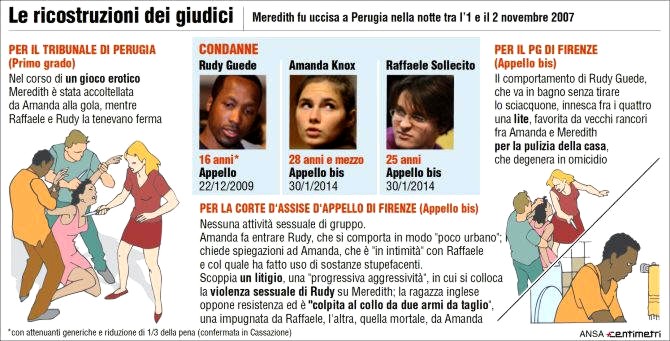
Wednesday, February 12, 2014
Admired Feminist Victoria Brownworth On Knox As Ice-Cold And Media’s Hit & Miss Performance
Posted by Peter Quennell
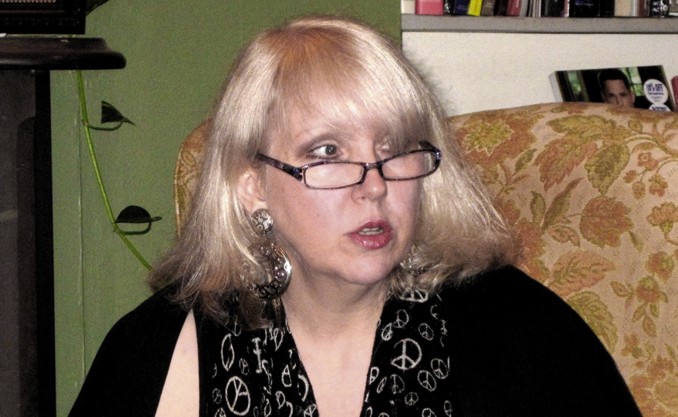
This is a key part (please read it all) from the great Victoria Brownworth’s Trial by Media - The Case of Amanda Knox
Is Knox guilty? Two long, complicated trials have said yes. Knox’s massive PR machine”“much like Simpson’s”“says no. That PR machine also ignores the fact that Knox falsely accused a black man of the murder and that he spent time in prison solely because of her accusation that she saw him take Kercher into the bedroom and heard her scream””while she, Knox, did nothing.
Angelina Antoinetti, Knox’s personal prison guard, told reporters after the conviction on Jan. 31 that Knox has reinvented herself for the media.
“Now she’s become this TV star, who cares passionately about what happened to her “˜friend’ Meredith Kercher, and wants the truth to come out. She’s painting herself as a warm, loving human being, but the Amanda I knew was so composed, I never saw her suffering and other prisoners and staff called her the Ice Maiden.”
Antoinetti said Knox “never, ever talked of Meredith or expressed emotion about her death. Whenever Meredith’s face came on TV she didn’t want to know and didn’t respond. She was impenetrable. Underneath the veneers she remains the same controlled woman I knew well in Capanne prison. She was so composed, I never saw her suffering.”
Antoinetti said that Knox “became attached to me. I opened her cell each morning and shut her in at night. She liked English music like the Beatles and always sang. She had guitar lessons, too.”
Knox was “unlike any other prisoner,” Antoinetti said. “I’ve never seen another girl like her, especially so young. She’s magnetic and manipulative. She had no emotions for people, only books. She never talked to other prisoners, she was only concerned about her world. Even when they freed her after the appeal, she didn’t speak to a single person she had just spent four years with, just walked out.
That’s not human, is it?”
And that is the question for many: Who is the real Amanda Knox?
As with the Simpson trial, the media has played a huge role in the Knox case. The U.K. papers labeled Knox “Foxy Knoxy” while the Italian papers played up Knox’s sexual history and the more lurid sexual elements of the case”“the assertion that the murder was a drug-fueled sex game gone wrong.
In the U.S. ABC News has been a virtual PR firm for Knox, devoting hours of time on both 20/20 and Good Morning America as well as the actual ABC Nightly News promoting Knox’s innocence. Diane Sawyer did a heavily promoted hour-long interview with Knox when she was released from prison in 2011. And when the Jan. 31 conviction came in, on her ABC Nightly News broadcast, Sawyer led with “the American girl” Amanda Knox”“even though Knox is 26. A full six minutes of broadcast time was devoted to Knox”“including video of her singing and playing guitar. When has a national news network treated a twice-convicted murderer in such a manner?
The two media portraits of Knox”“the sex-obsessed sexual manipulator she’s been portrayed as being by the European media and the pristine girl-next-door innocent-abroad the U.S. media has presented conflict, obviously. But what has been lost in the emphasis on Knox as the victim of the story is the actual murder victim, Meredith Kercher.
Wednesday, November 27, 2013
Amanda Knox Lies Again To Get Herself Into Another European Court “But Really, Judge, Its Only PR”
Posted by Kermit
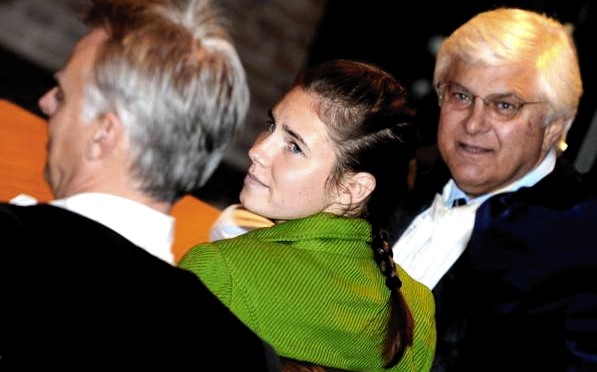
[Amanda Knox’s lawyer Luciano Ghirga (right): “Amanda wasn’t hit, we made no complaint”]
Introduction
This is the first of two posts on Knox’s claim to have sent an appeal to the Strasbourg-based European Court of Human Rights (ECHR).
Last Monday the main event that followers of the Meredith Kercher murder case were awaiting was the closing argument by Prosecutor Alessandro Crini in Amanda Knox’s and Raffaele Sollecito’s appeal trial.
Dr Crini’s structuring of the prosecution’s case in 16 points demolished the defendants’ efforts to present the volume of evidence against them as an incredible, long series of mistakes, coincidences and misunderstandings.
It seems, however, that Amanda Knox and her people didn’t want the public to be too fascinated by Dr Crini’s devastating argument. They really wanted them to be distracted by what can only be seen as an ill-judged public relations move, breaking yet more laws along the way.
Knox attempted to blow smoke over the prosecution’s arguments by grandly announcing “today, my lawyers filed an appeal of my slander[sic] conviction with the European Court of Human Rights.” That explanation of her PR ploy calls for a close review of her eligibility (here) and her so-called proof (next post).
Knox’s eligibility or otherwise
The European Court of Human Rights, is a supranational European tribunal dedicated to ““ as its name suggests - human rights.
It is not dedicated to criminal or civil proceedings on murder, sexual assault, theft, simulation of a crime, or any of the other charges that Knox faces.
In fact, to avoid the many unnecessary or spurious applications which hamper real cases getting attended to, the ECHR provides a number of online resources on who may apply and how and why.
One of the first issues that its advice underlines is that it is not a glorified appeals court:
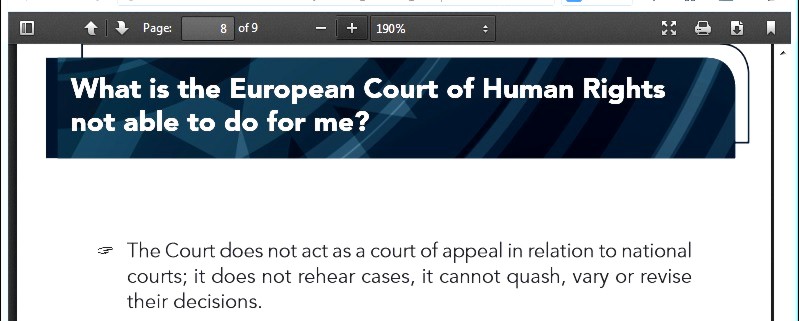
It is strange then, that Amanda Knox claims that her lawyers have “appealed” her case to the ECHR.
Either Knox’s legal advisors are just ignorant (which ones? The Italian professionals, or the American media hacks?) or this is simply a last-ditch Hail Mary action as an extradition request moves inexorably closer.
If the ECHR makes clear that it isn’t a court of appeal, there shouldn’t be any direct correlation between the Supreme Court confirming her as a convicted criminal and her application to the ECHR.
If that is in fact the basis of their application, it will not go far before rejection. In fact, the vast majority (more than 95%) of applications get rejected:
“For a number of years now, and owing to a variety of factors, the Court has been submerged by individual applications (over 130,000 were pending as at 31 August 2010). The overwhelming majority of these applications (more than 95%) are, however, rejected without being examined on the merits for failure to satisfy one of the admissibility criteria laid down by the Convention.
This situation is frustrating on two counts.
Firstly, as the Court is required to respond to each application, it is prevented from dealing within reasonable time-limits with those cases which warrant examination on the merits, without the public deriving any real benefit.
Secondly, tens of thousands of applicants inevitably have their claims rejected, often after years of waiting.”
It would be a outrageous if other, real human rights cases were delayed due to a Public Relations ruse as part of an extra-judicial strategy to undermine a request for Knox’s extradition.
Other ECHR on-line resources help potential applicants decide if they be eligible to be heard at the Court.
Below, a work-flow chart presents the main steps, including various “Admissibility Criteria”:
A first admissibility criterion
The first Admissibility criterion is that an applicant has exhausted “domestic remedies” in pursuing the recognition and correction of the human rights he or she feels have been abused.
Knox in her application to the ECHR directly relates the Italian Supreme Court final confirmation of her “calunnia” sentence (three years for obstruction of justice for framing her kindly boss Patrick Lumumba as the murderer of Meredith Kercher, thereby throwing off the course of the investigation) to her application to the ECHR.
But what were the supposed human rights abuses suffered? What did she do to remedy them?
The first requirement of exhausting “domestic remedies” means that the rights abuses that Knox alleges she has suffered have been pursued in Italy, and that all possible instances of reclamation in Italy have been visited.
However, as far as the public knows, Knox has not even placed a formal complaint concerning supposed civil rights abuse. Certainly her own Italian lawyers have said they havent.
The US and Italian publics would be interested in seeing her specific claims to the ECHR and whether there is any registration of such claims or complaints with the Italian police or other administrative or NGO offices.
Knox’s needling stepfather, Chris Mellas, stated in April 2008 on a precursor to the PMF discussion forum that a complaint had been filed concerning Amanda being hit during questioning.
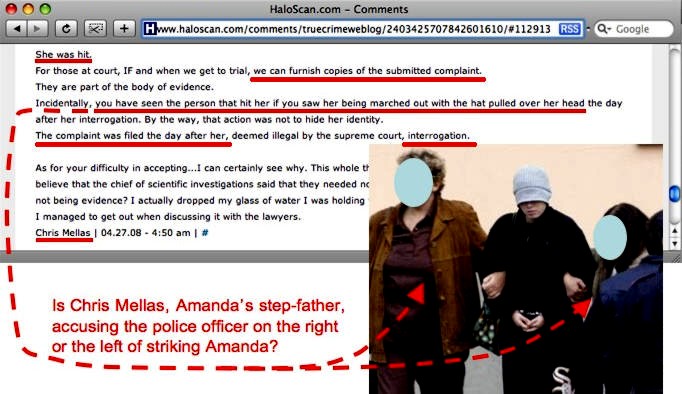
[Click for larger version]
However, nothing more has ever been heard of this complaint, which definitely would have been a starting point for pursuing domestic Italian remedies to the claimed rights abuse.
Since it appears zero rights abuses have been pursued in Italy, and the date of Knox’s application to the ECHR is in effect unrelated to her “calunnia” sentence confirmed by the Supreme Court, the six month limit beyond national remedies related to the rights abuse for applying to the ECHR is irrelevant here.
It should be noted that when Prosecutor Crini asked this week for an addition to Knox’s confirmed sentence for “calunnia”, adding another year to the three years already served by the convicted criminal, this is not a reopening of the “calunnia” case or an example of “double jeopardy”, but rather the reassessment on appeal of a separate, pending issue related to the basic calunnia charge: whether it should include an additional year of sentence for being aggravated.
Since this aggravation addition to the charge is awaiting determination, and follows from instructions of the Italian Supreme Court (and could result in an additional year in prison), it is not part of the prior, confirmed sentence.
A second admissibility criterion
Now just in case Knox or her lawyers would like to allege any perceived human rights abuse whatsoever in their ECHR application, the Strasbourg court insists on the reclamation in question being directly related to one of the sections of the European Convention on Human Rights
I’ve gone through it and I see chapters related to illegal detention (detention permitted only following arrest) and torture, but nothing related to getting cuffed on the back of your head.
If such an event ever occurred, it shouldn’t have, but quite likely one of the other authorities or rights bodies listed by the ECHR may be better equipped to deal with it.
This is a second Admissibility Criterion that filters out many applications: one can’t simply run to the ECHR saying “my rights have been abused” ““ the issue at hand must be directly related to the European Convention on Human Rights.
I seriously doubt the “hitting” event ever occurred because Knox’s own Italian lawyer Luciano Ghirga denied it, stating to the Press on 21 October 2008:
Amanda wasn’t hit. There were pressures fom the police, sure, but we never said she was hit.
As our next post here on this same subject will show, even Knox herself admitted she was treated well.
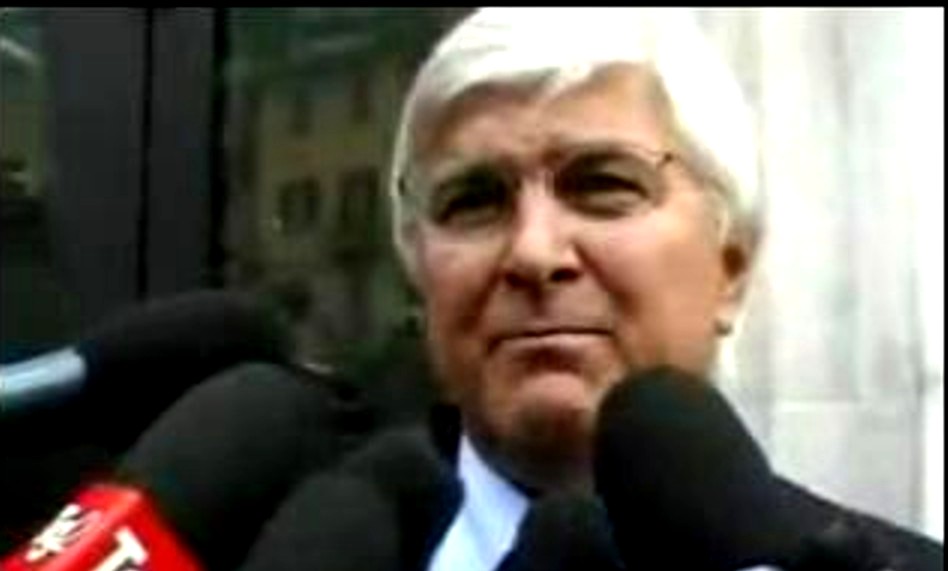
[Above: Amanda Knox’s Italian courtroom lawyer stating to the Press in 2008 that she had not been hit.]
If Knox hasn’t even tried to remedy being allegedly hit in Italy by suing or making formal complaints, nevertheless the Italian police certainly have acted upon such suggestions.
A number of legal processes are under way against Knox and her family members for slander and calunnia. Knox might face two more charges of aggravated calunnia. Why do I doubt that Knox has even mentioned those other legal processes in her application to the ECHR?
Those charges would of course have to be taken care of (as part of “exhausting domestic remedies”) before the ECHR would be able to consider her application, assuming it surmounted all of its other shortcomings to get to the ECHR judges’ hands.
A third admissibility criterion
Another Admissibility Criteria is the “Significant Disadvantage” filter. If an alleged rights abuse is minimal ““ compared to the very serious issues that the ECHR was created to consider ““ the application will go no further.
The only violent description of Knox’s alleged beating was given by her stepfather, Chris Mellas: “She was interrogated, and hit, and threatened,” he typed. “Tortured. Physically and mentally”.
However, there was never any medical or forensic notification of such “torture” before or after her incarceration in Capanne Prison.
Rather, Knox spent her time in prison receiving regular visits from a lovelorn Italian politician who befriended her, and participating in prison musical and theatrical activities.
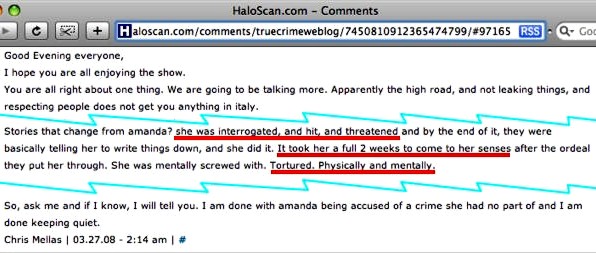
[Click for larger version]
In underlying the “significant disadvantage” requirement, the ECHR states in its examples of rejected claims, that it can’t be distracted by the French driver who lost a point on his driver’s licence, or the Romanian who claims 90 euros from the State, when the Court has real and serious Human Rights cases to deal with such as:
- El-Masri v. the former Yugoslav Republic of Macedonia (Article 3 of European Convention on Human Rights: Torture and inhuman and degrading treatment during and following applicant’s extraordinary rendition to CIA)
- Hirsii Jamaa and others v. Italy (Article 4 of Protocol No. 4: Return of migrants intercepted on the high seas to country of departure)
It’s almost certain that Knox has not pursued on an Italian level any remedies to her alleged human rights abuse (whatever it was), nor is there any evidence that the investigation into Meredith Kercher’s murder and the subsequent trials of Knox, Rudy Guede and Raffaele Sollecito were affected in their outcome by the rights abuse.
This is especially the case if the limit of Knox’s human rights suffering is that described by a talky ex-FBI helicopter pilot turned ex-college security guy turned Amanda Knox groupie, Steve Moore.
Moore describes the “frightful” circumstances of Knox’s witness questioning on the night of 5 November 2007 for the couple of hours (perhaps even somewhat less) that it lasted:
No food, no coffee, no bathroom breaks ““ nothing.
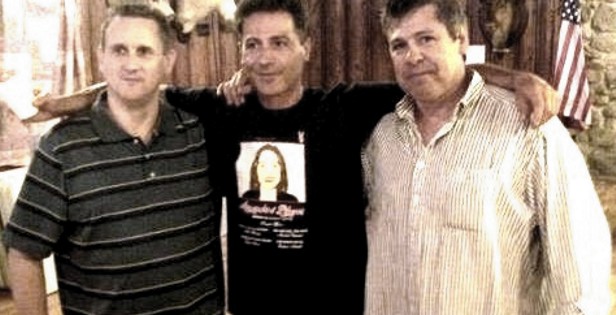
Above is ex-college security man Steve Moore, right, together with PR flunkie Bruce Fischer, left, both flanking “Frank Sfarzo”, a Knox-Mellas family friend.
Francesco Sforza is currently a fugitive from the Seattle courts on two counts of Assault-Domestic Violence, who continues to support Amanda in ongoing Internet blog posts, from wherever he may be.
See below. Click for larger. In purple, my corrections to Knox’s “what-I-want-the-World-to-believe” post about applying to the ECHR.
In conclusion
Between the manifest doubtfulness of the acceptability of Knox’s application to the European Court of Human Rights, on one hand, and the falsehoods and half-truths in her announcement, on the other, why do I get the feeling that the only reason and hope she and her team have in announcing the application (whether really filed or not) is to distract the attention of the followers of her appeal trial from the prosecution’s weighty arguments?
This will have little if any effect on the wheels of Italian Justice, and probably even less on a State Department more concerned with maintaining good relations with European allies while diplomatic challenges occur in the Middle East and Asia, than with a lobby plan to prevent Knox’s extradition.
[Below: The European Court of Human Rights in Strasbourg France]
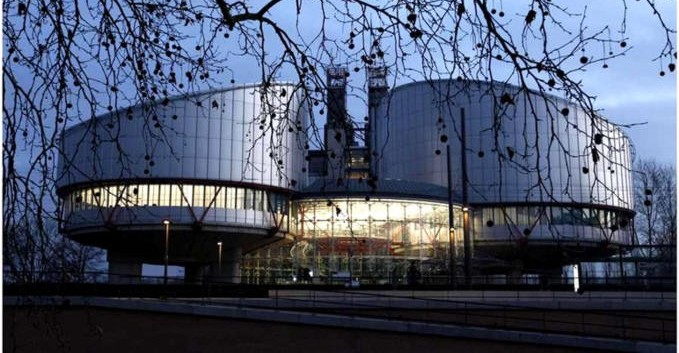
Tuesday, November 12, 2013
Differences Between Micheli, Massei, Hellmann and Nencini Courts Pointing To Almost Certain Outcome
Posted by Peter Quennell

What are the biggest differences? In fact the Supreme Court already pointed them out: science, scope, and balance.
Judge Micheli, Judge Massei and Judge Nencini all have a very extensive criminal-case background. All three have handled many cases of murder, many cases against the mafia, and many cases involving criminal science. All three have remarkable success records and have hardly ever been overturned on appeal.
Judge Hellmann and his court are the extreme outliers. Until forced into early retirement by the Council of Magistrates, he had been a (quite good) business judge. His one major criminal case, years ago, had led to a farcical outcome, and he was ridiculed for this at the time.
Cassation made it very clear that he simply did not reflect a knowledge of the precise Italian law on scope and balance at the appeal level, and that he mishandled the science. In fact, as he actually said, the reason he appointed two independent DNA consultants was that he was at sea on the science.
That left Judge Hellmann’s panel of judges like a rudderless ship, bereft of the kind of good guidance from the lead judge on science, scope, and balance that comes only from many years of experience.
Which, given a level playing field, the pathbreaking Italian system enforces competently like almost no other.
Above all as the Hellmann Report makes extraordinarily plain, his court came to be swayed by the CSI Effect, with the help of two tainted consultants and probably the irresponsible Greg Hampikian in Idaho.
The CSI Effect is a phenomenon very, very unlikely to happen in Judge Nencini’s court. First, take a look at this good explanation of what the CSI Effect is in the Fox Kansas City video.
Many crime shows such as the BBC mysteries and the Law & Order series and spinoffs show investigators solving their crimes in the old-fashioned way. Lots of witness interviews and alibi and database checking, and walking around and loose ends and lying awake at night puzzling. And often there’s a big stroke of luck.
But if you watch the very popular CSI Las Vegas series and its spinoffs in Miami and New York, and the various clones on other networks, you will see something very different indeed.
When those shows first began airing worldwide in the late nineties, the producers explained that audiences increasingly appreciate learning something new when watching a show, and it is true, one sure can load up on the trivia.
But you will also see the US equivalent of Dr Stefanoni and her forensic team in those shows, roaming far beyond the narrow crime scene, interrogating witnesses and checking alibis and finding a lot of non-forensic evidence, and even at times drawing guns.
Most unreal is that, time and again, the forensic evidence testing is clearcut and takes just a few minutes and instantly clinches the case.
- There are several articles like this one and this one on whether the Casey Anthony jury was affected by a shortfall in the starkness of the forensics when the behavioral evidence seemed so strong.
- There are several articles like this one and this one on whether the appeal verdict outcome in Perugia might be affected in the same way.
- There are many articles like this one and this one and this one and especially this one saying there is a tough added burden on investigators and juries without a commensurate improved outcome.
With conviction rates declining in the US and Europe, professionals are taking a scientific look at whether the CSI Effect is one big cause of that decline.
At the macro level in the US this writer doubted that the CSI Effect is fatally unbalancing takes on the wider evidence. The same conclusion was reached in this first major study at the micro level.
But the belief in the CSI Effect continues. Articles like this one on an Australian site talk of a backlash against too many acquittals. Some articles like this one argue that maybe lay juries are out of their depths.
And judges and prosecutions are taking countermeasures.
In Ohio and many other states prosecutors and judges are acting against a possible CSI Effect in their selection and briefing of juries. And an NPR report came up with these findings.
Some states now allow lawyers to strike potential jurors based on their TV habits. Judges are issuing instructions that warn juries about expecting too much scientific evidence based on what they see on TV.
In the field, Shelton says death investigators sometimes run useless tests, just to show they went the extra CSI mile.
“They will perform scientific tests and present evidence of that to the jury. Even if the results don’t show guilt or innocence either way, just to show the jury that they did it.”
This is coming at a time when death investigators in America have no resources to spare. An investigation by NPR, PBS Frontline and ProPublica shows some states have already opted not to do autopsies on suicides, others don’t autopsy people who die in traffic accidents, and many don’t autopsy people who die over the age of 60.
But Murphy, the Clark County coroner, expects things to get worse.
“You know, we’re in budget cuts right now. Everybody’s in budget cuts. Las Vegas is no different than anybody else. We’re hurting. We’re going to feel that same crunch as everybody else,” he says.
One of Zuiker’s great disappointments is that, for all its popularity, his fictional Las Vegas crime lab didn’t generate more political support to fund death investigation.
“I’ve done my job. You know, we’ve launched three shows that cater to 73.8 million people a week and is a global phenomenon and the largest television franchise in history. We hoped that the show would raise awareness and get more funding into crime labs so people felt safe in their communities. And we’re still hoping that the government will catch up.”
None of the science in Meredith’s case has ever been discredited in court. Even in Judge Hellmann’s court the agenda-driven independent consultants Conti and Vecchiotti failed - and under cross-examination admitted it.
Also remember that the Hellmann court did not get to see two very key closed-court scientific presentations (the stark recreation of the attack on Meredith, in a day of testimony, and later in a 15 minute video) which had a very big balancing effect on the Massei court.
Right now the reputation of not one defense-campaign stooge who has attacked the science remains intact.
Greg Hampikian has headed for cover. He had widely proclaimed that he clinched the Hellmann court’s outcome, in an act which may well have been illegal. Unsurprisingly, he is now trying very hard to hide his own claimed “proof ” of shortfalls in the science, as Andrea Vogt has been showing in her Boise State University investigation, and as we will soon post more on.
Saul Kassin is another defense-campaign stooge who falsely claimed that he clinched the Hellmann court outcome by “proving” a false confession by Knox - in an interrogation that never even took place.
Despite all of this, maybe as straw-snatching, we can again see an organized attempt to confuse American opinion on the science of the case.
Whether she did this intentionally or not, that is what the PR tool Colleen Barry of the Associated Press was doing when she omitted that the trace of Meredith on the knife is undisputed hard evidence.
Judge Micheli and Judge Massei handled the science, scope, and balance with some brilliance. In all three dimensions Judge Hellmann fell short abysmally.
What is your own bet on the outcome under the exceptionally experienced Judge Nencini?
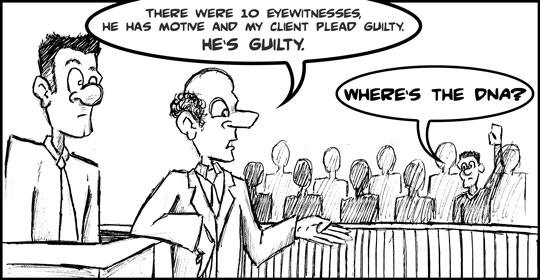
Parts of this post were first posted in 2011 after the disputed and much examined outcome of the Casey Anthony murder trial..
Sunday, September 22, 2013
Questions For Knox: Ten Hard Questions That Knox Should Be Asked Monday On ITV’s Daybreak
Posted by The Machine

Amanda Knox will be interviewed for the first time in Britain on ITV’s Daybreak programme tomorrow.
No interviewer should unquestioningly accept everything Knox says as the gospel truth. Remember Knox served three years in prison and is labeled a convicted felon for life for malicious lying.
So let’s hope tomorrow’s interview is not yet another whiny mis-statement of the core facts, and not yet more sliming of Italian officials, of which we have just seen so many.
There are many questions on this site which Knox has never ever answered. Some arise from the evidence and some from her dishonest book.
See especially the tough questions here and here and here and here. With luck the Daybreak hosts will ask Knox all of these tough questions below.
1. Multiple false alibis
You and Raffaele Sollecito gave completely different accounts of where you were, who you were with and what you were doing on the night of the murder. Neither of you have credible alibis despite three attempts each. Sollecito told Kate Mansey from The Sunday Mirror that you and him were at a party.
He told the police that you and him were at his apartment. He then told them that he was home alone and that you weren’t at his apartment from around 9.00pm to about 1.00am. You first told the police that you were at Sollecito’s apartment. After you were informed that he was no longer providing you with an alibi, you repeatedly claimed that you went to the cottage with Diya Lumumba.
You changed your story yet again and claimed that you were at Sollecito’s apartment, but he might have gone out. All the other people who were questioned had one credible alibi that could be verified.
Extract of Sollecito’s witness statement.
“I went home, smoked a joint, and had dinner, but I don’t remember what I ate. At around eleven my father phoned me on the house phone. I remember Amanda wasn’t back yet. I surfed on the Internet for a couple of hours after my father’s phone call and I stopped only when Amanda came back, about one in the morning I think.
Question 1. Why did you and Raffaele Sollecito repeatedly tell the police and others a pack of lies?
2. False accusation
You falsely claimed that Diya Lumumba killed Meredith in two witness statements and you repeated the false accusation in your handwritten note to the police on 6 November 2007. You served three years in prison for this felony and your appeal to the Supreme Court was denied.
Question 2. Why did you repeatedly accuse Diya Lumumba of murder when you knew full well that he was completely innocent and why didn’t you or your mother retract your accusation when he was in prison?
3. The Double DNA Knife
According to a number of independent forensic experts - Dr. Patrizia Stefanoni, Dr. Renato Biondo, Professor, Giuesppe Novelli, Professor Francesca Torricelli, Luciano Garofano, Elizabeth Johnson and Greg Hampikian - Meredith’s Kercher’s DNA was found on the blade of a knife from Raffaele Sollecito’s kitchen.
He falsely claimed in his prison diary that he had accidentally pricked Meredith’s hand whilst cooking. Dr Stefanoni analysed the traces on the knife six days after last handling Meredith’s DNA. This means that contamination couldn’t have occurred in the laboratory.
Meredith had never been to Sollecito’s apartment, so contamination away from the laboratory was impossible.
Question 3. How do you think Meredith’s DNA got onto the blade of the kitchen knife?
4. The bra clasp
An abundant amount of Raffaele Sollecito’s DNA was found on Meredith’s on the exact part of Meredith bra clasp that was bent out of shape during the attack on her. His DNA was identified by two separate DNA tests. Of the 17 loci tested in the sample, Sollecito’s profile matched 17 out of 17. Professor Torricelli testified that it was unlikely the clasp was contaminated because there was a significant amount of Sollecito’s DNA on it.
Professor Novelli analysed the series of samples from all 255 items processed and found not a single instance of contamination, and ruled out as implausible that a contaminating agent could have been present just on one single result. David Balding, a Professor of Statistical Genetics at University College London, recently analysed the DNA evidence against Sollecito and concluded it was strong.
Question 4. How do you think Raffaele Sollecito’s DNA ended up on Meredith’s bra clasp?
5. The bloody footprint on the bathmat
According to two imprint experts - Rinaldi and Boemi - the bloody footprint on the blue bathmat in the bathroom matched the characteristics of Sollecito’s foot, but couldn’t possibly belong to Guede. Rudy Guede’s bloody footprints led straight out of Meredith’s room and out of the house which indicates that he didn’t go into the bathroom after Meredith had been stabbed.
See our past posts on this here and here.
Question 5. Who do you think left the bloody footprint on the bathmat?
6. Mixed samples of Amanda Knox’s DNA or blood and Meredith Kercher’s blood
According to the prosecution’s experts, there were five instances of your DNA or blood mixed with Meredith’s blood in three different locations in the cottage. Even your lawyers conceded that your blood had mingled with Meredith’s blood. In other words, Meredith and Amanda Knox were both bleeding at the same time.
Question 6. Why were you bleeding on the night of the murder and is it a coincidence that only your DNA was found mixed with Meredith’s blood?
7. The Luminol Enhanced Footprints
Bare bloody footprints were revealed by Luminol at the cottage. Three of them are compatible with your foot size and one of them is compatible with Raffaele Sollecito’s foot size.
Question 7. What do you think the Luminol was reacting to - Meredith’s blood or some other substance?
8. The staged break-in
There is absolutely no evidence that anyone stood outside Filomena’s window and climbed up the vertical wall on the night of the murder. There were no marks from soil, grass or rubber soles on the wall. The earth of the evening of 1 November 2007 was very wet, so if anybody had climbed the wall, they would have left some marks on it.
The glass on the window sill and on the floor show no signs of being touched after the window was broken, which would have been the case if the intruder had gained entry through the window.
There was not a single biological trace on any of the shards of glass. It would have been very likely that an intruder balancing on the window sill would have suffered some kind of injury or cut because of the shards of glass.
If the window had been broken from the outside, there would have been shards of glass outside, but there wasn’t even one.
Judge Massei and the panel of judges at the Italian Supreme Court specifically mentioned the shards of glass on top of Filomena’s clothes which had been tossed onto the floor in her room and regarded it as proof that the break-in was staged.
Question 8. Who do you think staged the break-in at the cottage?
9. Knowledge of the crime
Umbria Procurator General Galati’s pointed out in his appeal that you knew specific details of the crime that you could have only known if you had been present when Meredith was killed.
According to multiple witnesses at the police station, you said you were the one who had found Meredith’s body, that she was in the wardrobe, that she was covered by the quilt, that a foot was sticking out, that they had cut her throat and that there was blood everywhere. But you weren’t in a position to have seen anything at all when the door was kicked in.
In your witness statement you described Meredith’s scream. Other witnesses have corroborated your claim that there was a loud scream.
Question 9. How did you know so many precise details of the crime?
10. Shower and the “bathmat shuffle”
The Scientific Police found 13 traces of blood in the bathroom that Meredith and you shared. Prosecutor Mignini and Filomena have both expressed their surprise that you showered in a blood-spattered bathroom.
Filomena told Mignini during cross-examination: “I thought it was odd that she’d had a shower when there was blood all over the place.”
You told Mignini that you used the bathmat to shuffle to your room.
Question 10. Why did you shower in a bathroom that was splattered with blood, and did you notice the visible bloody footprint on the bathmat when you used it to shuffle to your room? And why so soon after did the police notice that you were stinking?
Lorraine Kelly and Aled Jones the ITV Daybreak hosts who should confront Amanda Knox

Thursday, September 05, 2013
Questions For Knox: Why So Many False Claims In Accounts Of Your Visit To The House?
Posted by James Raper
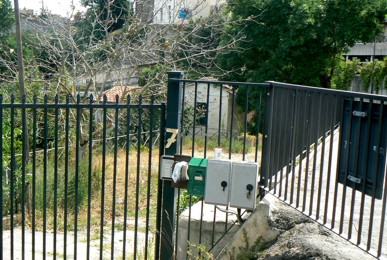
[Filomena’s shutters on approach above and below NOT half-open as they were when Knox arrived]
Additional to this post and this post on the overwhelming strength of the evidence against Sollecito and Knox.
Amanda Knox was of course lying from the start about her initial visit to the cottage to have a shower and collect a change of clothing, in the account which she gave the police when they turned up, and which she then embellished into a version of Little Red Riding Hood in her e-mail.
Here’s how we can know why. One of her most glaringly untrue claims, one not hard to fathom out and indeed I have no doubt that she had done so herself and regretted it within minutes of recounting her story to the police.
The shutters to Filomena’s window were open upon the arrival of the postal police. Massei (page 27) -
Said window had two half-closed shutters, and the right-hand shutter (the right with respect to the person looking at it) was slightly more open”› (page 62, hearing of February 6, 2009, Battistelli’s statements).
Filomena’s window is in fact the most prominent feature of the cottage for anyone walking down the lane to it. Yet, incredibly, if we are to make sense of the rest of her account, we are required to believe that Knox did not notice the shutters .
Whether they were half open or less than half open does not matter. They were open, indicating, as a matter of common sense, that the occupant of the room might be somewhere around.
You would think that anyone (anyone but Knox apparently) apprised of this elementary scrap of information about their own home and flatmates, and then in addition finding that the front door was open and no-one was answering, would have checked the other rooms, and in particular Filomena’s, out of curiosity if not concern, wouldn’t you? Of course you would.
Discovery of the broken window would then, if not before, have been inevitable, but of course in those circumstances no one would have believed that she had then had a shower and blow dried her hair.
Of course it did occur to the police that her story was a load of nonsense, just as it did to Knox and Sollecito.
See at bottom here for the famous picture of Knox and Sollecito together outside the cottage, Knox with her left hand up to her eyes and Sollecito by her side standing with his back to the window, jaws clenched and staring blankly straight ahead.
They knew, and they must have been praying hard that the police were just as stupid as them. When they were not arrested on the spot they must have thought their prayers were answered.
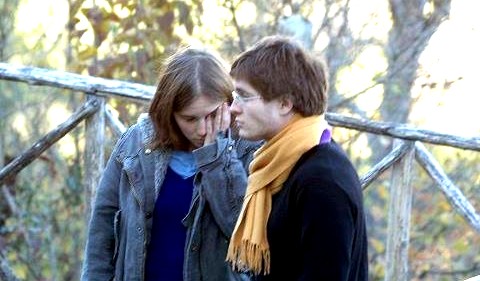
[Shower? Knox with Sollecito several hours later at which point her body odour was reported as immense]
Wednesday, July 03, 2013
Questions For Sollecito: Did Your Father & Lawyers Pre-Approve This Rant?
Posted by Our Main Posters

[Francesco Sollecito previously on Italian national TV trying to explain the weirdness of his son]
This is in response to your open letter to Italy’s TGCom website.
You are starting to sound eerily like the serial killer Ted Bundy in jubilant “catch me if you can” mode. Ted Bundy also thought he was the brightest guy on the block and the cops, prosecutors and judges were all a few bricks short of a wall.
Ted Bundy was of course caught, by smart cops, and put on trial, by smart prosecutors in front of a smart judge and jury. He made a terrible hash of his defence, he was unanimously found guilty, by a jury of smart peers, and he was made to pay his dues to society and the victims’ families - with his life.
You posted this to an audience in Italy which for the most part thoroughly dislikes you, when you are already in line for sentences that could cost you 30 years ranging up to life.
So. Did your father Francesco and your lawyers Bongiorno and Maori (and all of Knox’s people) give you the go-ahead for this seriously bizarre rant, or not?
Once upon a time, there was Amanda and Raffaele, she was an American student, studying languages and he studying Computer Science. They met at a classical concert and fell in love… no wait like that it is too boring….Lets make it more intriguing, lets see…..I know!
The prosecution found a crazy drunk, and cocaine dealer, Kokomani, after a year the story becomes: Amanda and Raffaele met in August, no one knows how or when, and one day at a bar, where Kokomani would get drunk, Amanda’s uncle came from America, no one knows why or when, and introduces the fiancees ( about to get married, I would say at this point) to the ignorant (unknown) Kokmani (who maybe thought he was going to be the best man) it’s clear. UNDERLINING that he is Amanda’s uncle and the two young people are Amanda and Raffaele (famous at the time, after all)
Mmmm…...come on it’s not the best, but at least it is more interesting, it doesn’t matter that there is no confirmation to none of this, anyway it’s a movie, OK. let’ s continue…..
Raffaele rents a house on Corso Garibaldi, a five minute walk from Via della Pergola, where Amanda lives with three roommates, Meredith, Filomena and Laura. The two pass many days together, they cuddle, have fun, they have outings to towns close to Perugia, and a couple of times they have lunch at Amanda’s house with the other flatmates. They live enthusiastic days, smiling every time they look in each others eyes….. Halloween Day, Oct. 31 2007, Amanda goes to work at Patrick Lumumba’s pub, so Raffaele works on his thesis and late that night they meet up….. to be together as always, taking care of each other.
Uff! What a pain in the ass! Give this movie a bit of adrenaline, what the hell! O.K. O.K…...one day along comes a heroin addicted serial super witness brought by the prosecution who says that he saw Amanda and Raffaele in Piazza Grimana, by a small villa a few feet from via della Pergola, discussing vividly, no one knows what and no one knows what day, but it happened at 9:00p.m. to 11:00p.m. circa. It doesn’t matter that the night between the end of Oct. and beginning of Nov. was freezing cold, it doesn’t matter that Raffaele has a house where he can do what the hell he wants, but according to the heroin addicted serial super witness, the two were under the rain for three hours (if we are talking about Nov. 1, 2007) and the cold discussing who knows what, furthermore, the heroin addicted serial super witness of murders (who’s name is Curatolo) says that when he went back to Piazza Grimana the two contentious fiancees were no longer there and he saw the buses that go to the discos boarding the kids…..it doesn’t matter that the 1st of Nov. there is not a bus in this world because the night at the disco was on the night of Halloween, Oct.31, 2007…...for the Pubblico Ministero Giuliano Mignini, Curatolo was a credible witness. Even because heroin does not produce hallucinations while cannabis does.
In reality the two fiancees passed the evening and the night at Raffaeles’s house since it was free and they had an intensive week of commitments. The 1st of Nov. in particularly Amanda had to work at Patrick’s pub, but as the evening was not busy he did not need Amanda, and after a friend of Raffaele’s passed by to cancel an appointment to go to the bus station, suddenly the two fiancees had the night free and they passed the time watching the movie “il favoloso mondo di Ameliè”, then eating fish Amanda read Harry Potter in German to Raffaele and they made love all night…...
Il Giudice di Primo Grado, Giancarlo Massei took in full the version of the heroin addicted serial super witness tramp….. Come on Giancarlo we are still not satisfied! Come on! These two fiancees are cramming our balls!! You are all of us….
According to the reconstruction of Judge Giancarlo Massei, that sentenced Amanda and Raffaele to 25 and 26 years in prison, things went this way: Amanda and Raffaele after being 3 hours in the cold under the rain, the night of the 1st of November 2007, head toward Amanda’s house in Pergola street and go right away into Amanda’s room (a room that was smaller than Raffaele’s cell when he was in prison) and start making love to bother Meredith who was reading a book in the other room…doesn’t matter that more than 5 people had car trouble and were waiting for a tow-truck, in front of the house during that time, and they give testimony that nobody passed by
Sorry, but why didn’t Amanda and Raffaele go to Raffaele’s house that was free and nobody would have been bothered?.. . Come-on! Why do you have to take into consideration this useless details, show us some firecrackers! Go Giancarlo!
Judge Massei continues: sometime during the evening, while the two were having sex in Amanda’s room, suddenly somebody knocked at the door… Amanda and gets up and gets dressed goes to the door and who does she see? ...Rudy Guede, a colored guy that didn’t know anybody except the guys of the lower floor and had met Amanda and Meredith one time but never in his life had he met Raffaele,. that urgently needed to take a shit.
But what?! What kind of plot is this? Where in the hell do you see that people go around knocking on doors because they need to take a shit?... Come on Giancarlo do not disappoint us! But judge Massei does not disappoint us…. Meanwhile Amanda opens the door to the poor black, victim of bewitched charm for Amanda, and goes inside to go to take a shit…. and Amanda as if nothing happen, goes back in the room and gets undressed again…
But why couldn’t Meredith go open the door while she was reading a book?..Oh, right! Otherwise Amanda loose the part of the main actress, sorry, you are right!
Practically , according to Judge Giancarlo Massei’s reconstruction the story goes on like this : while Amanda and Raffaele went back to have sex, Rudy Guede comes out of the bathroom, after listening to some songs on his ipod, he is overwhelmed by the SEXUAL VIBRATIONS that Amanda and Raffaele were relishing in the house hallway and the house room….
WTF Giancarlo, this is tough shit! Not even Dario Argento could come up with something like that…. “SEXUAL VIBRATIONS”....WTF you are a genius!! Give me five!...but the good part has still to come: when Guedé smells the SEXUAL VIBRATIONS, all of a sudden he is possessed and decides by all means that he has to have sexual intercourse with Meredith.. and ventures in her room and, being rejected, because poor soul he is ugly, Raffaele and Amanda get into the action and at that point dont help Meredith who is their friend, but, to the contrary and unexpectedly, they help Rudy Guede to rape Meredith and than finish her up cutting her throat…
All three had knives: Rudy has a past as thief, he used to burglarize offices and apartments with the same “modus operandi” that he used to get in in via della Pergola, moreover he has been captured while sleeping in a kindergarten in Milano with a knife in his bag. Raffaele had always a little collector knife in his pocket: never mind that he never used it to hurt anybody in his life, there are no traces of anybody else on his little knife “¦.Amanda… and Amanda? Judge Massei says that she used an enormous kitchen knife got from the “looser” Raffaele’s house and put it in her purse…. why?? because…YOU NEVER KNOW (a 15 cm knife can be always useful “¦).. Massei says.
But the poor Meredith was a small build girl, her wounds are not that big and that knife would have gone through the neck because of how big it is… there isn’t blood on that knife nor Meredith’s DNA because the analysis of the scientific police are completely unreliable , not having being compelled to observe the international protocols. There are no bleach traces. What the police says are hypothesis never proved .
Come on, details! But there are no traces of Amanda and Raffaele on the crime scene, there are only Guede’s, everywhere. How it is possible that they were cleaned, were are the traces of the cleaning??! Come on do not break our nuts! This is just details, let me see this movie!
What about that little bra hook? There are 5 different profiles…all on the iron part of the hook, nothing on the tissue: it has been found 46 days after the “polizia scientifica” swept the crime scene, and meanwhile even the police swept the scene with no anti-contamination precautions and put upside down the all apartment. There isn’t Raffaele profile on that hook: if that mix of traces is properly read you can find anybody’s DNA
Do you want to stop with these bothersome things?!! Lets finish to see this movie!! Massei concludes: we don’t know why Amanda and Raffaele choose to kill Meredith, but we have to accept their choice. THE EVIL CHOICE. Probably under the influence, because they didn’t despise her, taking into account that they said that they smoked a joint… unfortunately nobody tested to check if Amanda and Raffaele used heavy drugs or were in the habit of binge drinking. WTF! Great job! You weld The Exorcist and Lethal Weapon!! Giancarlo you are my idol!!!!
Sunday, June 16, 2013
Questions For Knox: Do You Really Think “False Memories” Claim Framing Italians Yet Again Will Help?
Posted by Our Main Posters

[You say Madison Paxton found Kassin? So why did Bruce Fischer and Sarah claim to have done so??]
1. Your Real Persona, Widely Observed
Remember that Italians have seen a lot more of the real you than most Americans ever have. Italians all saw the real you described here and here.
That is why maybe 95% of all Italians long ago concluded for your guilt. At times you can come across as winning but, as there on the stand, too often as brash, sneering, sharp-elbowed, humorless, uncaring, and self-absorbed.
That is the Knox that put off many who encountered you in Seattle, it is why you had Halloween largely alone, and why you put off almost everyone you encountered in Perugia. Including everyone in your house in Perugia, and most in Patrick’s bar - and this literally in less than a month.
The “lost little girl” persona, the “chaste girl who never did sex and drugs” persona, the “diligent girl who studied so hard” persona, and the “they all want to get me because I am so fantastically cute” persona you or your agenda-driven shadow-writer put in the book have many people who have seen a lot of you in strong disbelief.
Can you name even one good friend who still stands by you in Perugia, given that even Raffaele Sollecito has placed you at the brink of a cliff?
By the way, this is not an unkind group, mostly comprised as it is of professionals, and some surprising things you yourself said in your book confirmed a suspicion about untreated root causes that we mentioned here.
2. Pages 270 to 272 Of Your Book With Your False Claims Highlighted
Let us first quote what you claim about your interrogation as “explained” by Saul Kassin who had at this point diagnosed you only long-distance and talked with not even one person who was there. False claims are shown in bold.
Thankfully Madison had researched the science on false confessions. She found Saul Kassin, a psychologist at John Jay College of Criminal Justice in New York. A specialist in wrongful convictions, he took the mystery out of what had happened to me.
Before my interrogation, I believed, like many people, that if someone were falsely accused, they wouldn’t, couldn’t, be swayed from the truth while under interrogation. I never would have believed that I could be pressured into confessing to something I hadn’t done. For three years I berated myself for not having been stronger. I’m an honest person. During that interrogation, I had nothing to hide, and a stake in the truth “” I desperately wanted the police to solve Meredith’s murder. But now I know that innocent people often confess. The records kept of people convicted of a crime and later exonerated by DNA evidence show that the DNA of 25 percent of them didn’t match the DNA left at the scene. The DNA testing showed that one in four innocent people ended up confessing as I did. And experts believe that even more innocent people confess, both in cases with and without DNA evidence.
According to Kassin, there are different types of false confessions. The most common is “compliant,” which usually happens when the suspect is threatened with punishment or isolation. The encounter becomes so stressful, so unbearable, that suspects who know they’re innocent eventually give in just to make the uncomfortably harsh questioning stop. “You’ll get thirty years in prison if you don’t tell us,” says one interrogator. “I want to help you, but I can’t unless you help us,” says another.
This was exactly the good cop/bad cop routine the police had used on me.
Besides being compliant, I also showed signs of having made an “internalized” false confession. Sitting in that airless interrogation room in the questura, surrounded by people shouting at me during forty-three hours of questioning over five days, I got to the point, in the middle of the night, where I was no longer sure what the truth was. I started believing the story the police were telling me. They took me into a state where I was so fatigued and stressed that I started to wonder if I had witnessed Meredith’s murder and just didn’t remember it. I began questioning my own memory.
Kassin says that once suspects begin to distrust their own memory, they have almost no cognitive choice but to consider, possibly accept, and even mentally elaborate upon the interrogator’s narrative of what happened. That’s how beliefs are changed and false memories are formed.
That’s what had happened to me.
I was so confused that my mind made up images to correspond with the scenario the police had concocted and thrust on me. For a brief time, I was brainwashed.
Three years after my “confession,” I’d blocked out some of my interrogation. But the brain has ways of bringing up suppressed memories. My brain chooses flashbacks””sharp, painful flashes of memory that flicker, interrupting my conscious thoughts. My adrenaline responds as if it’s happening in that moment. I remember the shouting, the figures of looming police officers, their hands touching me, the feeling of panic and of being surrounded, the incoherent images my mind made up to try to explain what could have happened to Meredith and to legitimize why the police were pressuring me.
This new knowledge didn’t stop my nightmares or flashbacks, but I was so relieved to learn that what I’d been through wasn’t unique to me. It had been catalogued! It had a name! As soon as I understood that what happened during my interrogation wasn’t my fault, I started forgiving myself.
Kassin and others show that interrogations are intentionally designed to bewilder and deceive a suspect. Originally created to get highly trained, patriotic U.S. fighter pilots to sell out their country during the Korean War, one technique uses a tag team of investigators and tactics meant to induce exhaustion, agitation, and fear. It’s especially potent on young, vulnerable witnesses like me. The method was designed not to elicit information but to plant it “” specifically tailored to destroy an orderly thought process. After some hours, the subject gives the interrogators what they want “” whether it’s the truth or not.
In my case they’d put several interrogators in a room with me. For hours they yelled, screamed, kept me on edge. When they exhausted themselves, a fresh team replaced them. But I wasn’t even allowed to leave to use the bathroom.
These were strategic measures, many of which are described in Kassin’s report on police interrogation, “On the Psychology of Confessions: Does Innocence Put Innocents at Risk?” Reading it, I was flabbergasted to learn how by the book the police had been in their manipulation of me.
It had been the middle of the night. I’d already been questioned for hours at a time, days in a row. They tried to get me to contradict myself by homing in on what I’d done hour by hour, to confuse me, to cause me to lose track and get something wrong. They said I had no alibi. They lied, saying that Raffaele had told them I’d asked him to lie to the police. They wouldn’t let me call my mom. They wouldn’t let me leave the interrogation room. They were yelling at me in a language I didn’t understand. They hit me and suggested that I had trauma-induced amnesia. They encouraged me to imagine what could have happened, encouraged me to “remember” the truth because they said I had to know the truth. They threatened to imprison me for thirty years and restrict me from seeing my family. At the time, I couldn’t think of it as anything but terrifying and overwhelming.
That was exactly their point.
Highlighted in bold is another large body of your many easy-to-disprove lies as in the previous post.
Your bizarre analysis leads to many many questions.
- What honest person? You served three years for felony lying. Exactly how did you ever help the police? What good cop/bad cop routine? There were only ever 2 or 3 interviewers there. What airless room? You were in a very modern building with air conditioning. What shouting? What 43 hours of interrogation? You had at most been questioned for one or two hours - and only for a few minutes on this night when you “broke”. What story were police forcing on you? Why were you so confused and stressed - other than that Sollecito had just left you with no alibi? What did the police concoct and thrust on you, and why? Why didnt they do that to anyone else? So many others were interviewed too.
You are not even in Kassin’s “vulnerable” target group. How could you possibly be brainwashed in such a short time? What do you mean “after some hours”? What hours? Who exactly yelled and screamed and kept you on edge? What fresh tag team? Who stopped you leaving the interrogation room for a bathroom break? Why did you testify that you were given refreshments and treated well? Why did your own lawyers say you were treated well? Why did they never lodge a complaint? Why when you had an excellent interpreter did you say you couldn’t understand? Why would police threaten to imprison you for 30 years when their whole interest moved quickly to Patrick as you engineered? And why after the interview when you were left sitting in a corridor, babbling and being calmed down, did you not simply walk right out?
In fact, nobody ever accused you of anything at all in your voluntary witness interview.
You were put under no pressure to confess. Not so long after Sollecito fingered you, you spontaneously blamed Patrick for Meredith’s death. For the next several hours, you babbled on, again and again blaming Patrick. Dr Mignini then witnessed you being warned, and barely said a word.
And of course you never ever did confess that you participated in the attack on Meredith yourself. You are really claiming a false confession - when you didnt even confess?
Sollecito similarly cracked spontaneously in an adjacent room, and he pointed the blame at you. Its very noticeable in all of the above that you essentially dont even mention his name. Nor does Kassin.
So what made Sollecito crack? You don’t explain that.
3. Saul Kassin’s Version with His False Claims Highlighted
It seems that Kassin was subjected to the toxic Misinformation Cloud conjured up by the Rank Amateurs for Knox, and Kassin very foolishly failed to check with anyone at all who had been on the spot.
Here are the relevant passages from Saul Kassin’s paper in American Psychologist with his false claims highlighted in bold.
As illustrated by the story of Amanda Knox and many others wrongfully convicted, false confessions often trump factual innocence. Focusing on consequences, recent research suggests that confessions are powerfully persuasive as a matter of logic and common sense; that many false confessions contain richly detailed narratives and accurate crime facts that appear to betray guilty knowledge; and that confessions in general can corrupt other evidence from lay witnesses and forensic experts””producing an illusion of false support. This latter phenomenon, termed “corroboration inflation,” suggests that pretrial corroboration requirements as well as the concept of “harmless error” on appeal are based on an erroneous presumption of independence among items of evidence. In addition to previously suggested reforms to police practices that are designed to curb the risk of false confessions, measures should be taken as well to minimize the rippling consequences of those confessions….
Meredith Kercher was found raped and murdered in Perugia, Italy. Almost immediately, police suspected 20-year-old Amanda Knox, an American student and one of Kercher’s roommates””the only one who stayed in Perugia after the murder. Knox had no history of crime or violence and no motive. But something about her demeanor””such as an apparent lack of affect, an outburst of sobbing, or her girlish and immature behavior”” led police to believe she was involved and lying when she claimed she was with Raffaele Sollecito, her new Italian boyfriend, that night.
Armed with a prejudgment of Knox’s guilt, several police officials interrogated the girl on and off for four days. Her final interrogation started on November 5 at 10 p.m. and lasted until November 6 at 6 a.m., during which time she was alone, without an attorney, tag-teamed by a dozen police, and did not break for food or sleep. In many ways, Knox was a vulnerable suspect””young, far from home, without family, and forced to speak in a language in which she was not fluent. Knox says she was repeatedly threatened and called a liar. She was told, falsely, that Sollecito, her boyfriend, disavowed her alibi and that physical evidence placed her at the scene. She was encouraged to shut her eyes and imagine how the gruesome crime had occurred, a trauma, she was told, that she had obviously repressed. Eventually she broke down crying, screaming, and hitting herself in the head. Despite a law that mandates the recording of interrogations, police and prosecutors maintain that these sessions were not recorded.
Two “confessions” were produced in this last session, detailing what Knox called a dreamlike “vision.” Both were typed by police””one at 1:45 a.m., the second at 5:45 a.m. She retracted the statements in a handwritten letter as soon as she was left alone (“In regards to this “˜confession’ that I made last night, I want to make it clear that I’m very doubtful of the verity of my statements because they were made under the pressures of stress, shock, and extreme exhaustion.”). Notably, nothing in the confessions indicated that she had guilty knowledge. In fact, the statements attributed to Knox were factually incorrect on significant core details (e.g., she named as an accomplice a man whom police had suspected but who later proved to have an ironclad alibi; she failed to name another man, unknown to police at the time, whose DNA was later identified on the victim). Nevertheless, Knox, Sollecito, and the innocent man she implicated were all immediately arrested. In a media-filled room, the chief of police announced: Caso chiuso (case closed).
Police had failed to provide Knox with an attorney or record the interrogations, so the confessions attributed to her were ruled inadmissible in court. Still, the damage was done. The confession set into motion a hypothesis-confirming investigation, prosecution, and conviction. The man whose DNA was found on the victim, after specifically stating that Knox was not present, changed his story and implicated her while being prosecuted. Police forensic experts concluded that Knox’s DNA on the handle of a knife found in her boyfriend’s apartment also contained Kercher’s blood on the blade and that the boyfriend’s DNA was on the victim’s bra clasp. Several eyewitnesses came forward. An elderly woman said she was awakened by a scream followed by the sound of two people running; a homeless drug addict said he saw Knox and Sollecito in the vicinity that night; a convicted drug dealer said he saw all three suspects together; a grocery store owner said he saw Knox the next morning looking for cleaning products; one witness said he saw Knox wielding a knife.
On December 5, 2009, an eight-person jury convicted Amanda Knox and Raffaele Sollecito of murder. The two were sentenced to 26 and 25 years in prison, respectively. Finally, on October 3, 2011, after having been granted a new trial, they were acquitted. [Actually they still stand accused - and facing a tough fact-based prosecution appeal] Ten weeks later, the Italian appeals court released a strongly worded 143-page opinion in which it criticized the prosecution and concluded that there was no credible evidence, motive, or plausible theory of guilt. For the four years of their imprisonment, this story drew international attention (for comprehensive overviews of the case, see Dempsey, 2010, and Burleigh, 2011).1
It is now clear that the proverbial mountain of discredited evidence used to convict Amanda Knox and Raffaele Sollecito was nothing but a house of cards built upon a false confession. The question posed by this case, and so many others like it, is this: Why do confessions so often trump innocence? ...
Third, it is important to realize that not all evidence is equally malleable or subject to corroboration inflation. Paralleling classic research indicating that expectations can color judgments of people, objects, and other stimuli that are ambiguous as opposed to those that compel a particular perception, forensic research indicates that ambiguity is a moderating condition. Asked to report on an event or make an identification decision on the basis of a memory trace that cannot be recovered, eyewitnesses are particularly malleable when confronted with evidence of a confession (Hasel & Kassin, 2009). This phenomenon was illustrated in the case against Amanda Knox. When police first interviewed Knox’s British roommates, not one reported that there was bad blood between Knox and the victim. After Knox’s highly publicized confession, however, the girls brought forth new “memories,” telling police that Kercher was uncomfortable with Knox and the boys she would bring home (Burleigh, 2011). ...
In recent years, psychologists have been critical of the problems with accuracy, error, subjectivity, and bias in various types of criminal evidence””prominently including eyewitness identification procedures, police interrogation practices, and the so-called forensic identification sciences, all leading Saks and Koehler (2005) to predict a “coming paradigm shift.” With regard to confessions, it now appears that this shift should encompass not only reforms that serve to minimize the risk of false confessions but measures designed to minimize the rippling consequences of those confessions””as in the case of Amanda Knox and others who are wrongfully convicted.
4. An Exposure Of Ten Of Saul Kassins’s False Claims
Our main poster the Machine exposes further how Kassin’s key claims are wrong.
False Claim 1: They brought her in for that final interrogation late at night.
No they didn’t.
Neither the police nor the prosecutors brought Amanda in for questioning on 5 November 2007. Amanda Knox herself testified in court that she wasn’t called to come to the police station on 5 November 2007.
Carlo Pacelli: “For what reason did you go to the Questura on November 5? Were you called?”
Amanda Knox: “No, I wasn’t called. I went with Raffaele because I didn’t want to be alone.”
Amanda Knox went with Raffaele Sollecito because she didn’t want to be alone. Kassin’s false claim is the first red flag that Saul Kassin is very confused or has been seriously misled when it comes to this well-documented and well-handled case.
False Claim 2: The so-called confession wasn’t until 6:00am.
No it wasn’t.
If Saul Kassin had actually read Amanda Knox’s first witness statement, he would have known that it was made at 1:45am. Knox had admitted that she was at the cottage when Meredith was killed some time before this.
False Claim 3: She was interrogated from 10:00pm to 6.00am.
No she wasn’t.
According to the Daily Beast Amanda Knox’s questioning began at about 11:00pm.
Since Knox was already at the police station [in the company of Raffaele Sollecito] the head of the murder squad decided to ask her a few questions. Her interrogation started at about 11 p.m.
After Amanda Knox had made her witness statement at 1:45am, she wasn’t questioned again that evening. That was it.
However, Amanda Knox herself then wanted to make further declarations and Mr Mignini who was on duty on the night sat and watched while Knox wrote out her declarations.
Mr Mignini explained what happened in his email letter to Linda Byron, another who was factually challenged.
All I did was to apply the Italian law to the proceedings. I really cannot understand any problem.
In the usual way, Knox was first heard by the police as a witness, but when some essential elements of her involvement with the murder surfaced, the police suspended the interview, according to Article 63 of the penal proceedings code.
But Knox then decided to render spontaneous declarations, that I took up without any further questioning, which is entirely lawful.
According to Article 374 of the penal proceedings code, suspects must be assisted by a lawyer only during a formal interrogation, and when being notified of alleged crimes and questioned by a prosecutor or judge, not when they intend to render unsolicited declarations.
Since I didn’t do anything other than to apply the Italian law applicable to both matters, I am unable to understand the objections and reservations which you are talking about.
In Amanda Knox’s written witness statement, she explicitly states that she’s making a spontaneous declaration:
Amanda Knox: “I wish to relate spontaneously what happened because these events have deeply bothered me and I am really afraid of Patrick, the African boy who owns the pub called “Le Chic” located in Via Alessi where I work periodically.
False Claim 4: They banged her on the back of the head.
No they didn’t.
All the numerous witnesses who were actually present when Amanda Knox was questioned, including her interpreter, testified under oath at trial in 2009 that she wasn’t hit. She has never identified anyone who hit her and on several occasions confirmed that she was treated well.
Even one of Amanda Knox’s lawyers, Luciano Ghirga, confirmed that Amanda Knox had not been hit: “There were pressures from the police but we never said she was hit.” He never ever lodged a complaint.
False Claim 5: All the other British roommates left town.
No they didn’t.
The police also told Sophie Purton that they needed her to stay on in Perugia on precisely the same basis as Amanda Knox. In chapter 19 of Death in Perugia, John Follain states that Sophie Purton was questioned by Mignini and Napoleoni in the prosecutor’s office on 5 November 2007.
Sophie had been counting on leaving Perugia to fly back home as soon as her parents arrived, but the police called to tell her they needed her to stay on; they would let her know when she could leave.
False Claim 6 : Amanda Knox stayed back to help the police.
No she didn’t.
This claim is flatly contradicted by Amanda Knox herself. In the e-mail she wrote to her friends in Seattle on 4 November 2007 she categorically stated she was not allowed to leave Italy.
i then bought some underwear because as it turns out i wont be able to leave italy for a while as well as enter my house
Knox actually knew on 2 November 2007 that she couldn’t leave Italy. Amy Frost reported the following conversation (The Massei report, page 37),
I remember having heard Amanda speaking on the phone, I think that she was talking to a member of her family, and I heard her say, No, they won’t let me go home, I can’t catch that flight.
It’s not the first time that the myth that Knox chose to stay behind rather than leave Italy has been claimed in the media. And incidentally, lying repeatedly to the police isn’t normally considered to be helping them.
False Claim 7: Amanda Knox had gone 8 hours without any food or drink.
No she hadn’t.
Reported by Richard Owen in The Times, 1 March 2009
Ms Napoleoni told the court that while she was at the police station Ms Knox had been ‘treated very well. She was given water, camomile tea and breakfast. She was given cakes from a vending machine and then taken to the canteen at the police station for something to eat.’
Reported by Richard Owen in The Times, 15 March 2009.
Ms Donnino said that Ms Knox had been “comforted” by police, given food and drink, and had at no stage been hit or threatened.
John Follain in his meticulous book Death in Perugia, page 134, also reports that Knox was given food and drink during her questioning:
During the questioning, detectives repeatedly went to fetch her a snack, water, and hot drinks including camomile tea.
False Claim 8: The translator was hostile towards Amanda Knox.
No she wasn’t.
Saul Kassin offers no evidence that the translator was hostile towards Amanda Knox and there is no evidence that this was the case. Nobody at the questura has claimed this. Amanda Knox’s own lawyers have not claimed this.
Even Amanda Knox herself has never ever claimed that Anna Donnino was hostile towards her although she had every opportunity to do so when being questioned on the stand.
False Claim 9: The translator was acting as an agent for the police.
No she wasn’t.
Saul Kassin offers no evidence to support this claim, which by the way in Italy is the kind of unprofessional charge that incurs calunnia suits. Do ask Curt Knox.
False Claim 10: The police lied to Amanda Knox.
No they didn’t.
The police didn’t mislead Amanda Knox. They told her quite truthfully that Sollecito was no longer providing her with an alibi, and that he had just claimed in the next interrogation room that she wasn’t at his apartment from around 9:00pm to about 1:00am. This also is the kind of unprofessional charge that incurs calunnia suits
Other claims by Kassin are also inaccurate. He claims that not one of your acquaintances had reported there was bad blood. That also is untrue. Even prior to the witness interrogation, law enforcement knew from multiple sources that you had been feuding with just about everyone. Acquaintances created no “new memory”. The bad blood you created was quite real.
5. How Kassin Bends His Own Science To Make Results Come Out “Right”
Our main poster Fuji dug deeper into the science and turns up what is an obvious scientific fraud by Kassin to insert himself into the case.
Meredith’s case is absolutely riddled with fabricated false myths.
They are now found by the hundreds on some misleading websites, and they simply make experienced law enforcement and criminal lawyers laugh.
For example “Police had no good reason to be immediately suspicious of Knox simply because the murder occurred at her residence”. And “The double-DNA knife is a priori to be disregarded as evidence, because no murderer would retain possession of such a murder weapon.”
One of the most strident and widespread myths is that Amanda Knox’s statements to the Perugian investigators on 5 and 6 November 2007, placing her at the scene of Meredith’s murder, are to be viewed as the products of a genuinely confused mind imbued with a naïve trust of authority figures.
The apparent certainty with which many of Amanda Knox’s most vocal supporters proclaim that Knox’s statements are actual “false confessions” as opposed to deliberate lies is not supported by even a cursory reading of the pertinent academic literature regarding false confessions.
What actually are “false confessions”?
Richard N. Kocsis in his book “Applied Criminal Psychology: A Guide to Forensic Behavioral Sciences” (2009), on pages 193-4 delineates three different kinds of false confessions:
First, a voluntary false confession is one in which a person falsely confesses to a crime absent any pressure or coercion from police investigators….
Coerced-compliant false confessions occur when a person falsely confesses to a crime for some immediate gain and in spite of the conscious knowledge that he or she is actually innocent of the crime….
The final type, identified by Kassin and Wrightsman (1985), is referred to as a coerced-internalized false confession. This occurs when a person falsely confesses to a crime and truly begins to believe that he or she is responsible for the criminal act.
The first problem facing Knox supporters wishing to pursue the false confession angle as a point speaking to her purported innocence is epistemological.
Although much research has been done on this phenomenon in recent years, academics are still struggling to come to terms with a methodology to determine their incidence rate.
The current state of knowledge does not support those making sweeping claims about the likelihood of Knox’s statements being representative of a genuine internalized false confession.
As noted by Richard A. Leo in “False Confessions: Causes, Consequences, and Implications” (Journal of the American Academy of Psychiatry and the Law, 2009):
Although other researchers have also documented and analyzed numerous false confessions in recent years, we do not know how frequently they occur. A scientifically meaningful incidence rate cannot be determined for several reasons.
First, researchers cannot identify (and thus cannot randomly sample) the universe of false confessions, because no governmental or private organization keeps track of this information.
Second, even if one could identify a set of possibly false confessions, it is not usually possible as a practical matter to obtain the primary case materials (e.g., police reports, pretrial and trial transcripts, and electronic recordings of the interrogations) necessary to evaluate the unreliability of these confessions.
Finally, even in disputed confession cases in which researchers are able to obtain primary case materials, it may still be difficult to determine unequivocally the ground truth (i.e., what really happened) with sufficient certainty to prove the confession false.
In most alleged false-confession cases, it is therefore impossible to remove completely any possible doubts about the confessor’s innocence.
The next problem Knox supporters face is that, even allowing for an inability to establish a priori any likelihood of a given statement being a false confession, the kind of false confession which is usually attributed to Knox is in fact one of the LEAST likely of the three types (Voluntary, Compliant, and Persuaded, as Leo terms the three different categories) to be observed:
Persuaded false confessions appear to occur far less often than compliant false confessions.
Moreover, despite assertions to the contrary, Knox and her statements do not in fact satisfy many of the criteria researchers tend to observe in false confessions, particularly of the Persuaded variety:
“All other things being equal, those who are highly suggestible or compliant are more likely to confess falsely. Individuals who are highly suggestible tend to have poor memories, high levels of anxiety, low self-esteem, and low assertiveness, personality factors that also make them more vulnerable to the pressures of interrogation and thus more likely to confess falsely…
Highly suggestible or compliant individuals are not the only ones who are unusually vulnerable to the pressures of police interrogation. So are the developmentally disabled or cognitively impaired, juveniles, and the mentally ill….
They also tend to occur primarily in high-profile murder cases and to be the product of unusually lengthy and psychologically intense interrogations… ordinary police interrogation is not strong enough to produce a permanent change in the suspect’s beliefs.
Most significantly, there is one essential element of a true Persuaded False Confession which in Knox’s case is highly distinctive:
To convince the suspect that it is plausible, and likely, that he committed the crime, the interrogators must supply him with a reason that satisfactorily explains how he could have done it without remembering it.
This is the second step in the psychological process that leads to a persuaded false confession.
Typically, the interrogator suggests one version or another of a “repressed” memory theory.
He or she may suggest, for example, that the suspect experienced an alcohol- or drug-induced blackout, a “dry” blackout, a multiple personality disorder, a momentary lapse in consciousness, or posttraumatic stress disorder, or, perhaps most commonly, that the suspect simply repressed his memory of committing the crime because it was a traumatic experience for him.
The suspect can only be persuaded to accept responsibility for the crime if he regards one of the interrogators’ explanations for his alleged amnesia as plausible.
Knox did not in fact claim drug or alcohol use as the source of her amnesia - rather, she claimed to have accepted the interrogators’ attribution that this was due to being traumatized by the crime itself, and she offers no other explanation for her selective amnesia:
This is from Knox’s statement to the court in pretrial on 18 October 2008 with Judge Micheli presiding.
Then they started pushing on me the idea that I must have seen something, and forgotten about it. They said that I was traumatized.
Of course, Knox’s initial statement went far beyond being that of being merely a witness to some aspect of Ms. Kercher’s murder, as the interrogators at first seemed to believe was the case.
Rather, her statement placed her at scene of the murder during its actual commission while she did nothing to avert it, which naturally made her a suspect.
In other words, in the absence of any of her other testimony which indicated that she was only a witness to the murder, her own self-admitted rationale for providing a false confession was that she was traumatized by the commission of the murder itself.
Perugia judges will be familiar with all of the above and we can be sure that they brief the lay judges on the remote circumstances and incidences of false confessions.
If I were a Knox defense attorney, I would find it to be a far more fruitful line of argumentation to argue that she was simply lying, rather than claiming the supremely unlikely provision of an actual internalized false confession.
6. Kassin’s Paper with Correct Facts and Context Now Included
Here is our main poster BR Mull describing what actually took place.
On November 2, 2007, British exchange student Meredith Kercher was found sexually attacked and murdered in Perugia, Italy. The next day, 20-year-old Amanda Knox, an American student and one of Kercher’s roommates, became a person of interest, along with Meredith’s downstairs neighbors and several of her other acquaintances. Interviewing close contacts is a cornerstone of police work. Two of Meredith’s close English friends, who were so scared they couldn’t sleep alone, left Perugia in the immediate aftermath of the murder. Everyone else stayed on.
Months before arriving in Perugia, Knox received a citation for a noise violation when a going-away party she’d thrown for herself in Seattle got out of hand. One of the officers described it as a “scene from Baghdad.” Within about three weeks of moving into the cottage in Perugia, Knox was ejected from a nightclub for pouring her glass on the head of a disc jockey.
It’s often said that Knox had no motive to kill Meredith, but it was Knox’s claim of drug use which indicated a possible motive: a drug-fuelled assault. There are various others, though a motive is not actually required for conviction. In crime scene videos from the day Meredith’s body was discovered, Knox can be seen outside the cottage glancing furtively around. Still, it was not this and other odd behavior, but rather the many conflicting witness statements by Knox and her new Italian boyfriend, Raffaele Sollecito, that led police to believe Knox was involved and lying when she claimed she was with Sollecito at his home continuously on the night of November 1.
Police interviewed dozens of witnesses in the days after the murder, some more than once. All witness statements were written down and signed for, not recorded. The police interviewed Sollecito for the third time beginning at 10:40pm on November 5. Knox later testified that she voluntarily accompanied her boyfriend to the station, because she didn’t want to be alone. The police did not summon her. To the interviewers’ surprise, Sollecito repudiated his earlier alibi when shown phone records, and now said Knox had left his apartment for much of the evening. Some time after 11:00pm the police asked if they might interview Knox. An interpreter was called and by 1:45am Knox had given a signed statement that she had witnessed the sounds of her employer, bar owner Patrick Lumumba, murdering Meredith at the cottage.
In that statement she acknowledged that she had been given an interpreter, and that she herself was now officially a suspect. Knox later testified that she was treated well. She was offered snacks and drinks during the interview and afterward. Made aware that she could not be interrogated without a lawyer, but still anxious to put out as much information as possible, she then requested a chance to make a spontaneous statement without any questioning. The prosecutor on duty agreed, and she gave a statement in front of him very similar to her witness statement from hours earlier.
Knox and the police gave different accounts of how the 11:00 to 1:45 am interview was conducted. Police said Knox was told Sollecito now no longer confirmed her alibi and he had called her a liar. She now had no alibi. Sympathetic to her because Knox now had no alibi, the interpreter urged her to try to remember at least something. Shown a text she had sent to Lumumba at 8:35pm saying “See you later. Have a good evening!” she was asked to explain this. The police say Knox started to cry and burst out, “It’s him! It’s him!”
Both Knox’s witness statement at 1:45 a.m and her voluntary suspect statement at 5:45am were written out in Italian and translated back to her before she signed. After Knox was formally taken into custody at midday on November 6, she asked for paper and wrote a slight modification of her earlier statements, adding: “In regards to this “˜confession’ that I made last night, I want to make it clear that I’m very doubtful of the verity of my statements because they were made under the pressures of stress, shock, and extreme exhaustion.”
Lumumba was arrested along with Knox and Sollecito. Knox and her mother held out on his non-involvement, but he was eventually determined to have a solid alibi. Another man, Rudy Guede, was identified through a hand print in Meredith’s bedroom. Knox appeared to have substituted Lumumba for Guede in her statements, and several details of the crime in her so-called confession were later corroborated by witnesses.
Because police had not needed to provide Knox with an attorney at the impromptu witness interview after 11:00, the Supreme Court ruled that statement inadmissible in the murder case against her. However both statements were ruled admissible in court for the purpose of establishing the crime of defamation against Patrick Lumumba. Knox’s November 6 letter was also ruled admissible.
Guede, the man whose DNA was found on the victim, told a friend while he was still on the run that he had found Meredith stabbed and that Knox had nothing to do with the murder. However, in the same conversation, which was recorded by police, he speculated that Knox and Sollecito might have been at the cottage. In a letter dated March 7, 2010, while his sentence was awaiting final confirmation by the Supreme Court, Guede wrote that Knox and Sollecito murdered Meredith. He reiterated this claim as a witness during Knox and Sollecito’s appeal.
Forensic police from Rome concluded that a kitchen knife found in Sollecito’s apartment had Knox’s DNA on the handle and Meredith’s DNA on the blade. Sollecito’s DNA was on the victim’s bra clasp in Meredith’s locked bedroom.
Several eyewitnesses came forward. Three neighbors testified that they heard a disturbance around 11:30pm in the vicinity of the cottage. A homeless man who at appeal admitted heroin use was reading a newsmagazine at the basketball court near the cottage. He testified that he saw Knox and Sollecito four or five times that night. An Albanian, a possible drug dealer. who the Massei court deemed unreliable after the Micheli court accepted him, said he had seen all three suspects together, and that Knox had accosted him with a knife. A grocery store owner testified he saw Knox at his shop early on the morning after the murder.
The conflicting alibis of the two were never resolved during trial. On December 4, 2009, an eight-person panel consisting of two professional judges and six lay judges found Amanda Knox and Raffaele Sollecito guilty of murder aggravated by sexual assault, simulation of a burglary, unlawful carrying of a knife and, in Knox’s case, criminal defamation of Patrick Lumumba. The two were sentenced to 26 and 25 years in prison, respectively….
Knox’s mother later described her daughter as “oblivious to the dark side of the world.” Knox herself wrote that, on the night of the murder, she and Sollecito were talking about his mother’s suicide. She told him her philosophy was “life is full of choices and that these choices are not necessarily between good and evil, but between what’s better and what’s worse.”...
7. Our Concluding Advice
You simply didnt remotely fit Kassin’s own profile of those who break easily under interrogation and make things up. Your suspect interrogation was gentle, brief and considerate, as you have said, and didnt remotely fit Kassin’s claims. And of course, you never made a false confession on that night or any other.
Do you really want this guy or yourself cross-examined on the stand? Again, it may be the last good time to try to walk all of your malicious invention back.
[Saul Kassin with President Travis of John Jay College who lets the false anti-Italy allegations stand]



